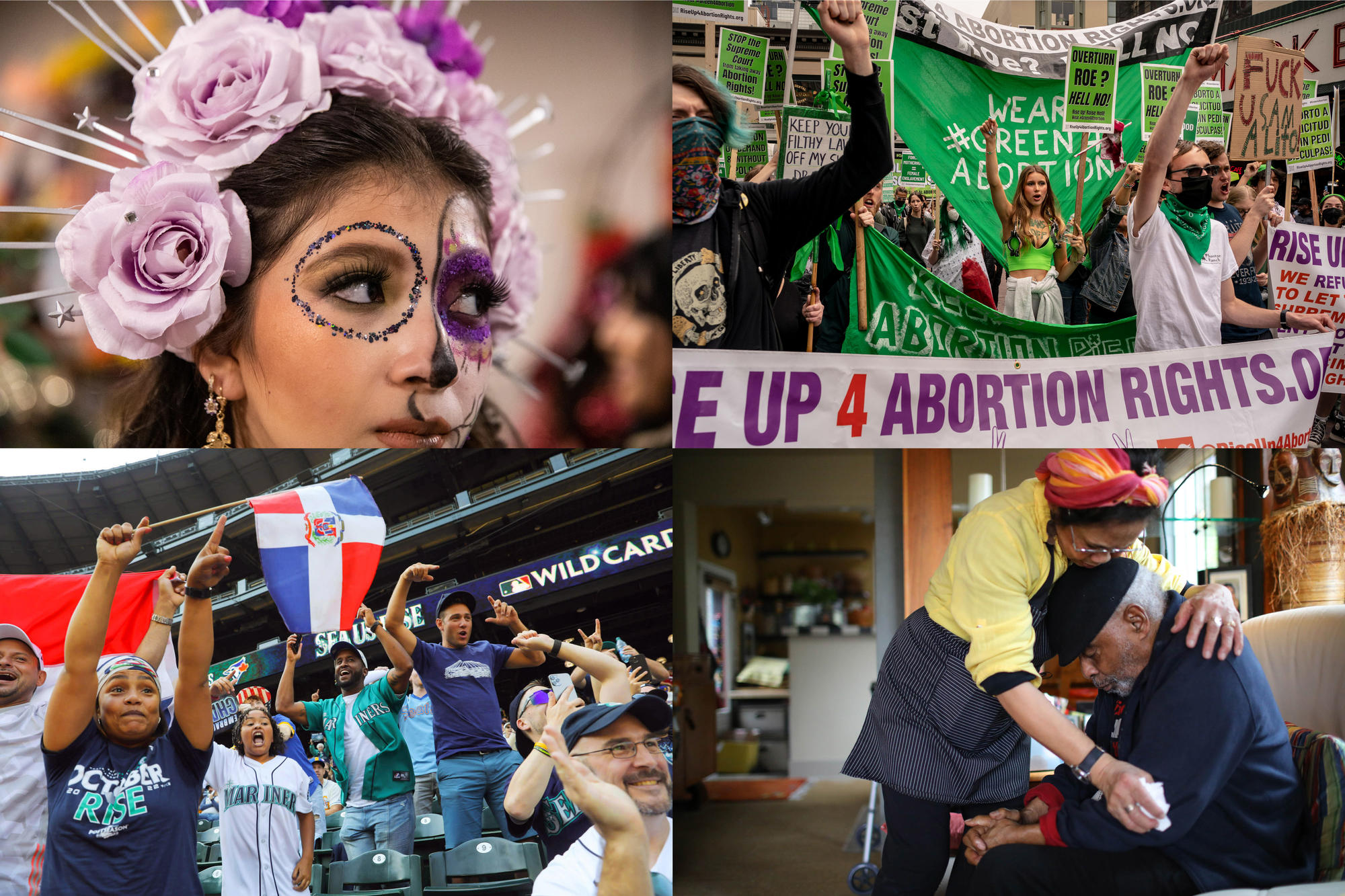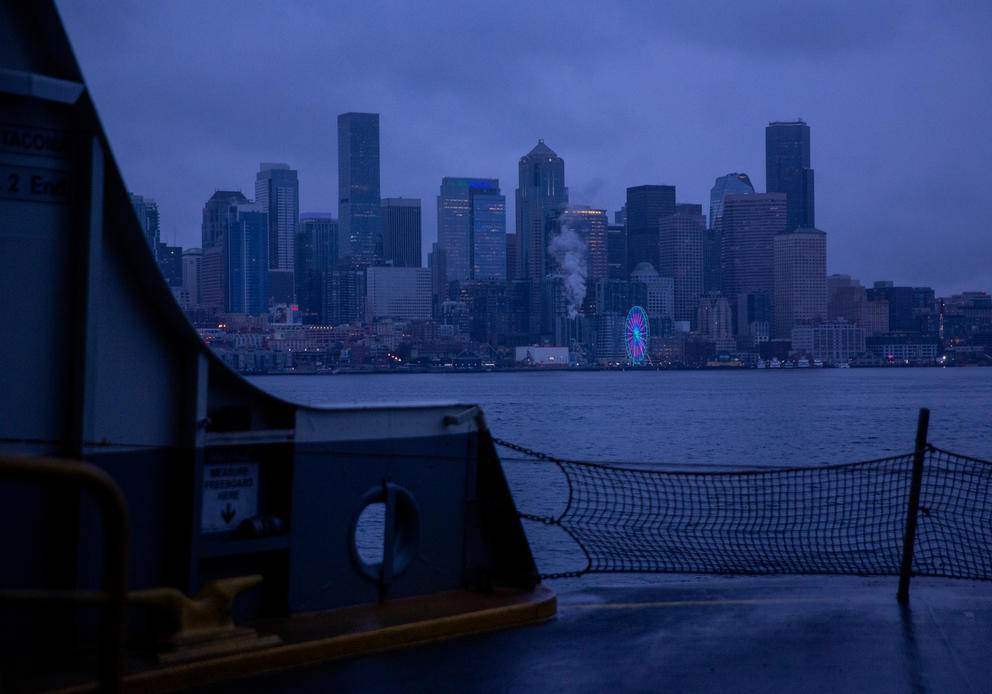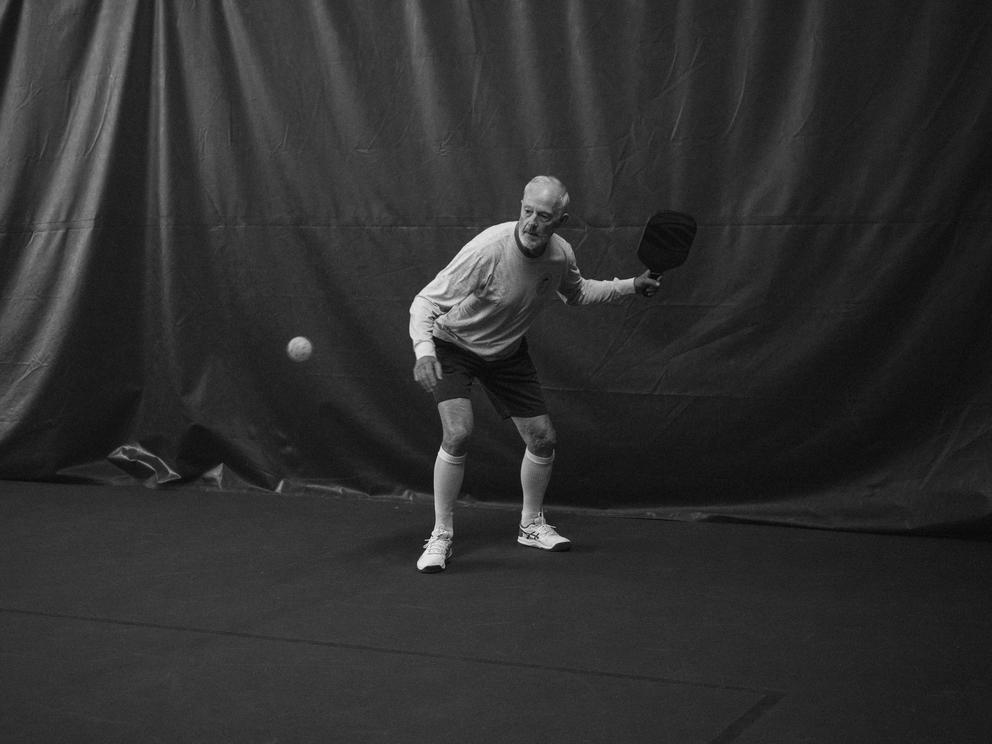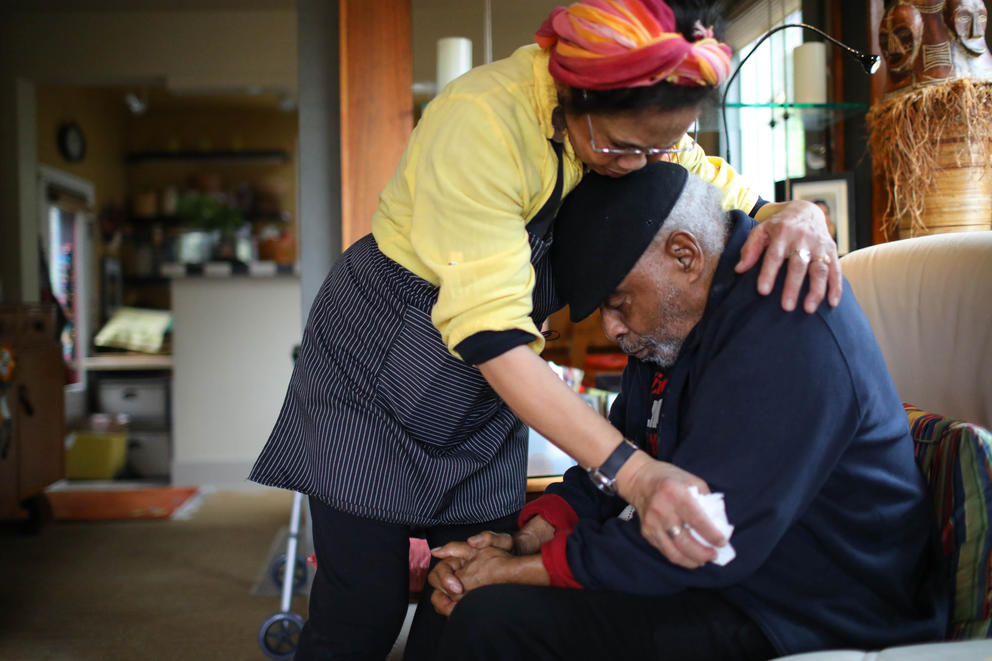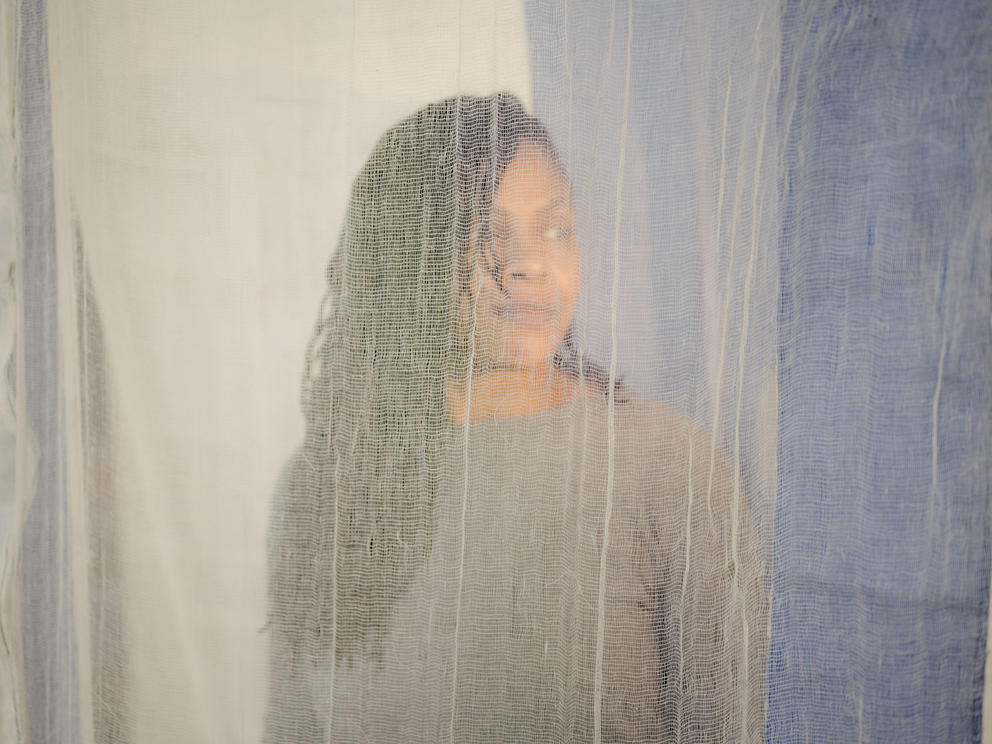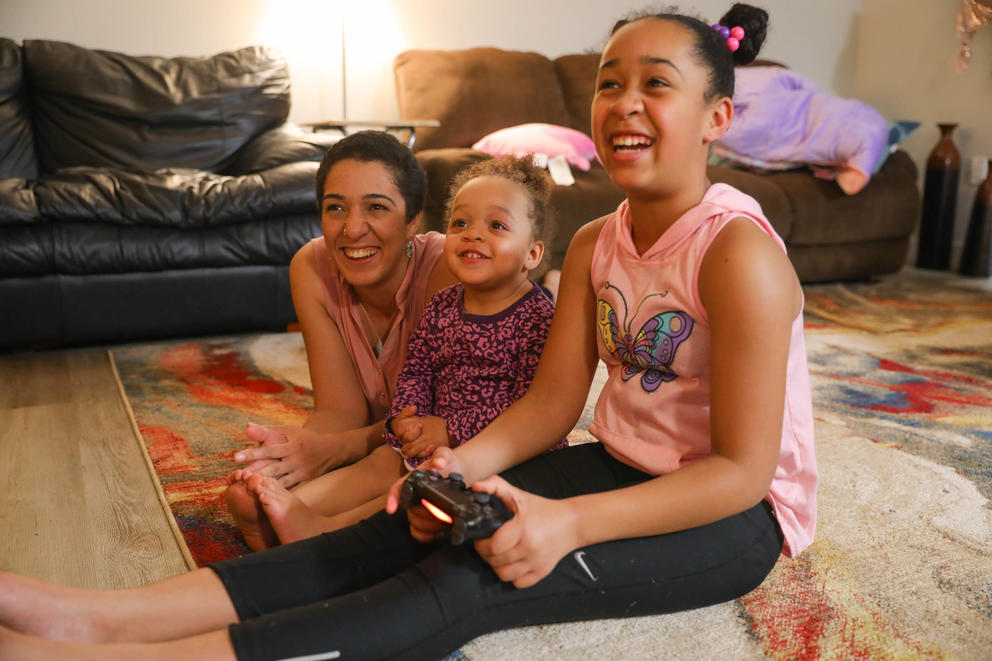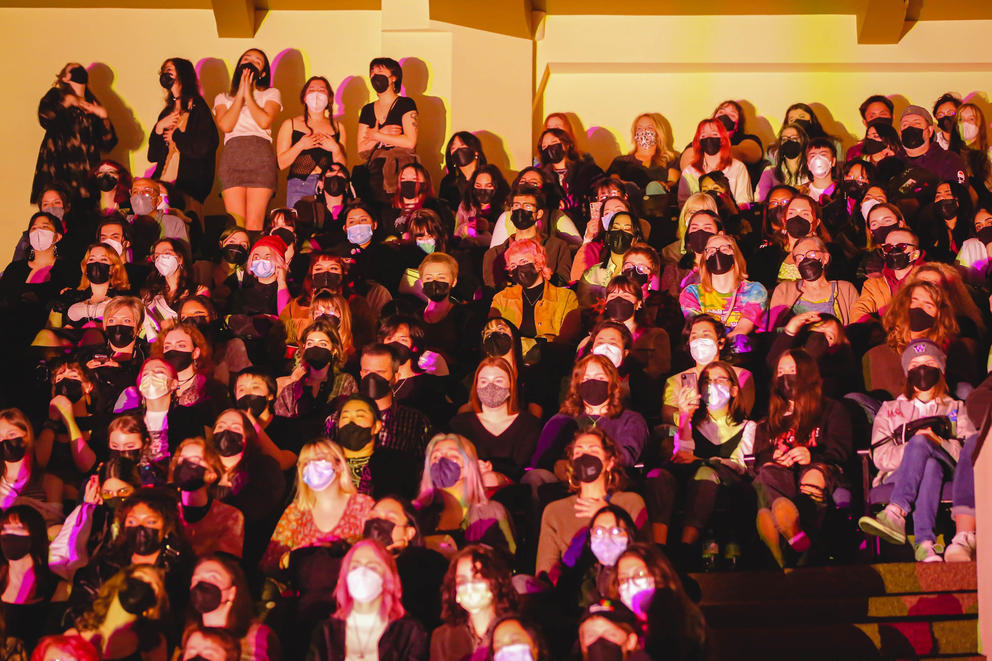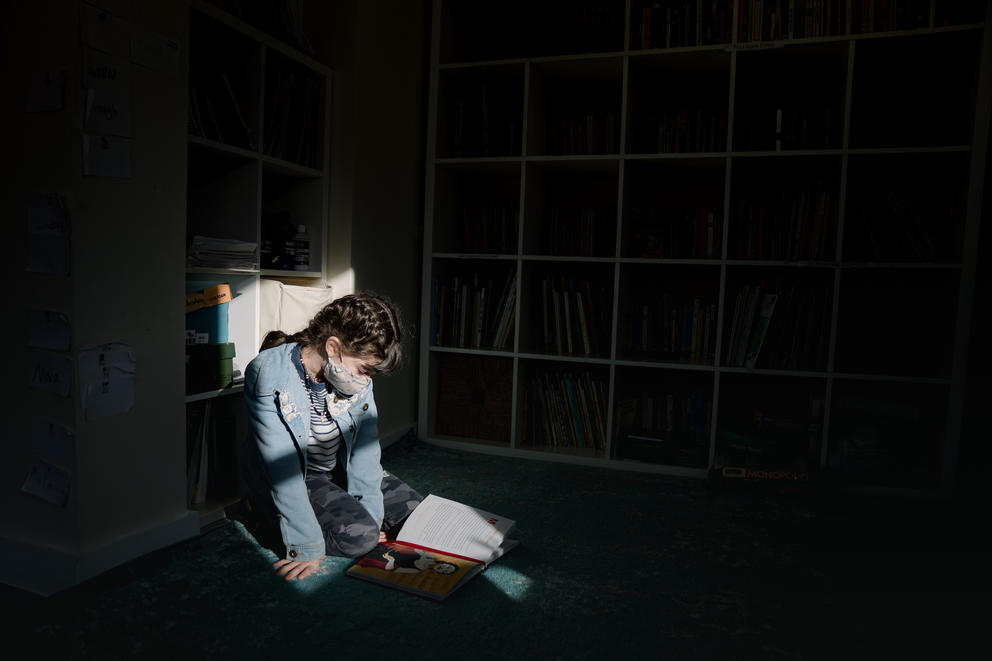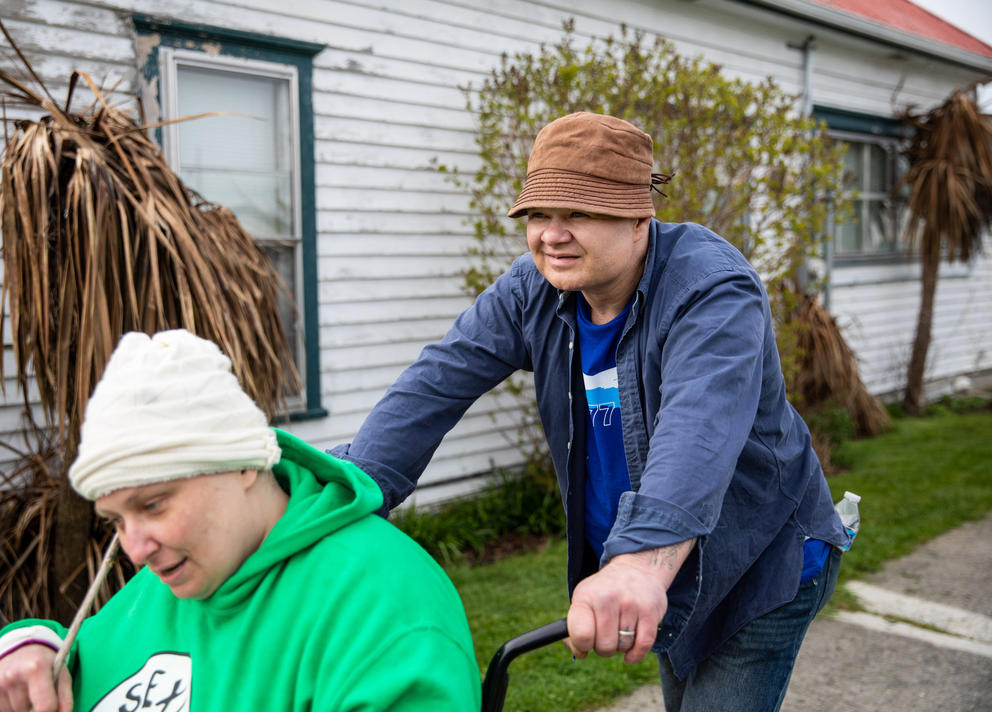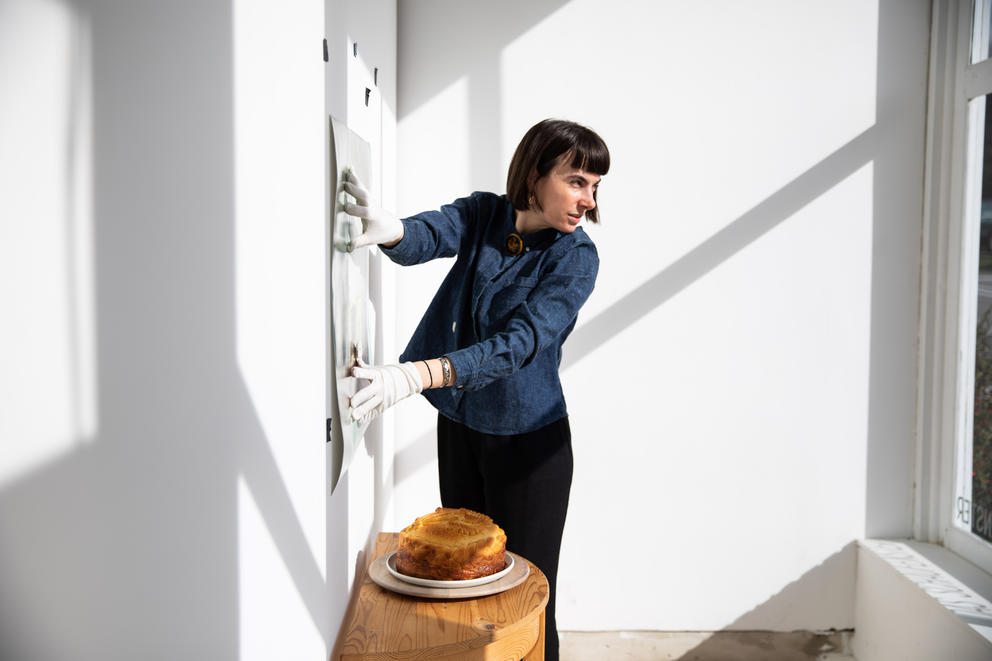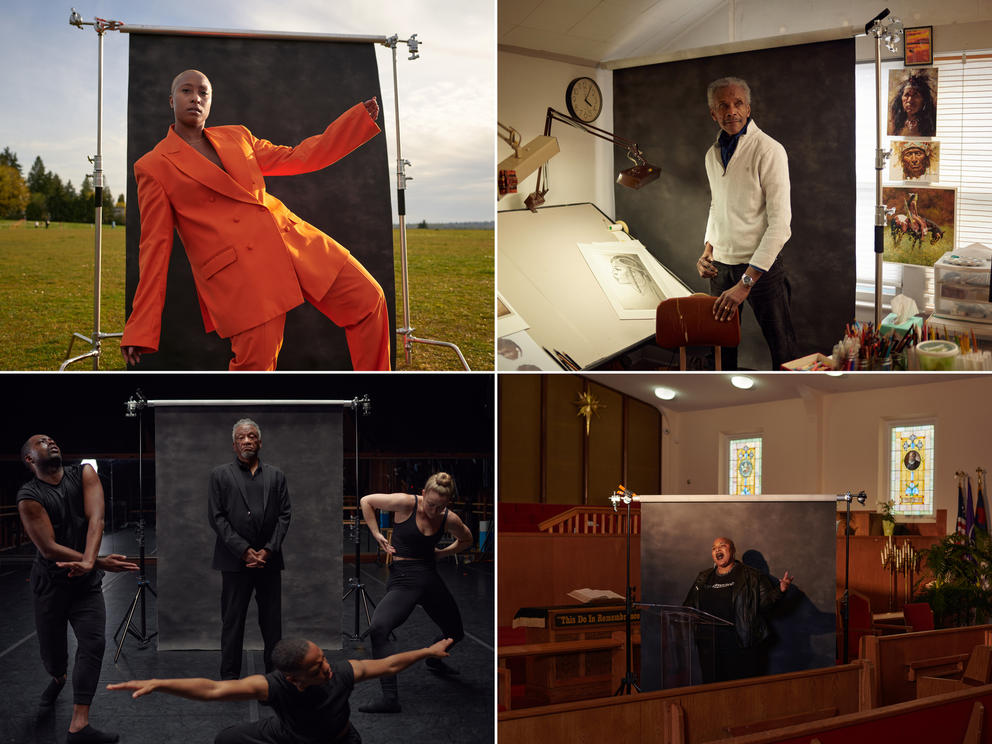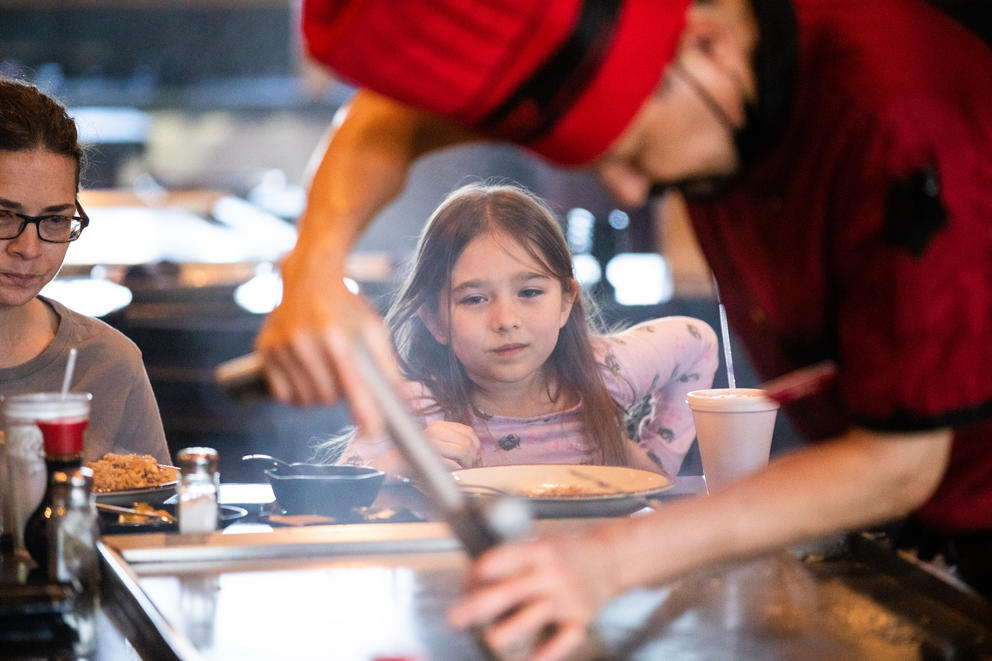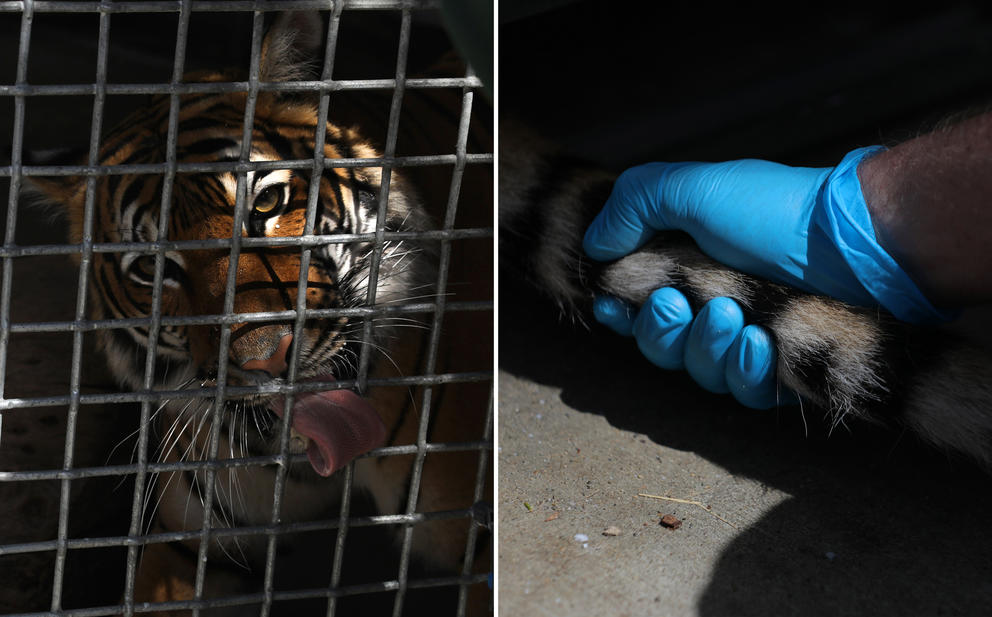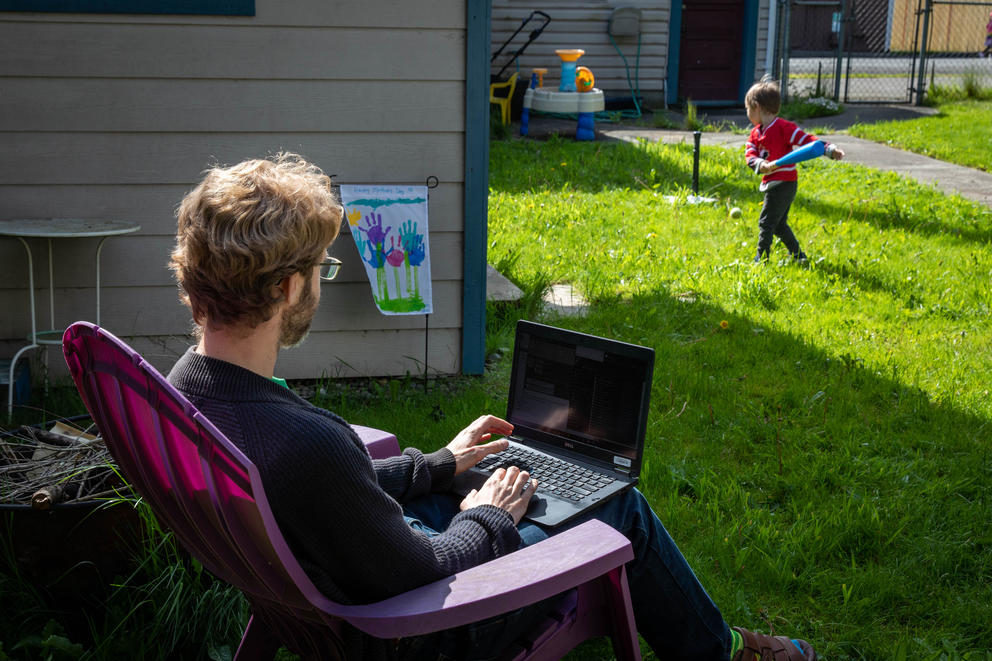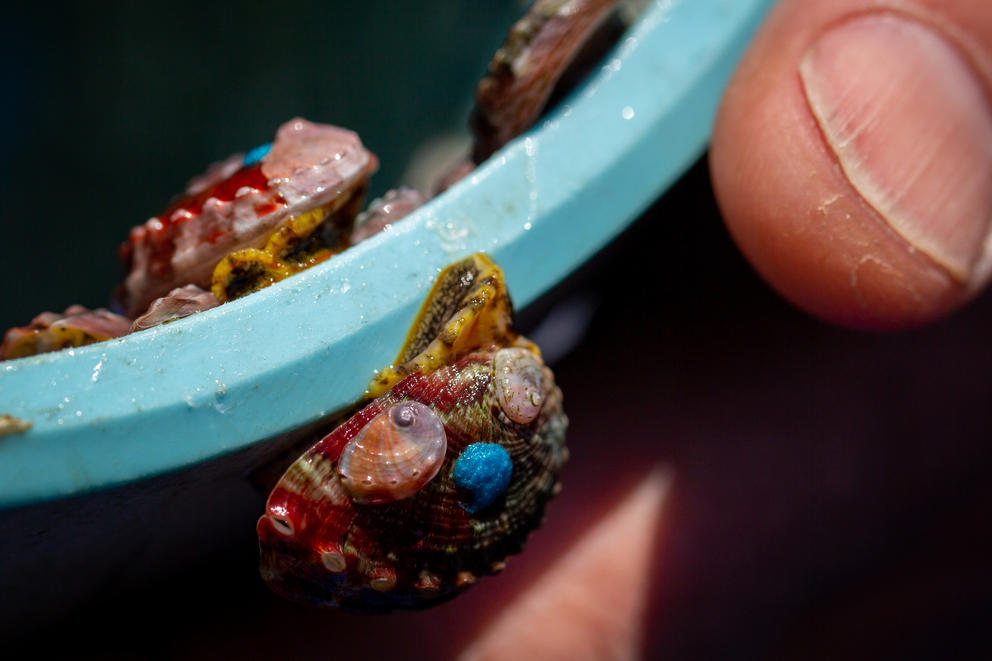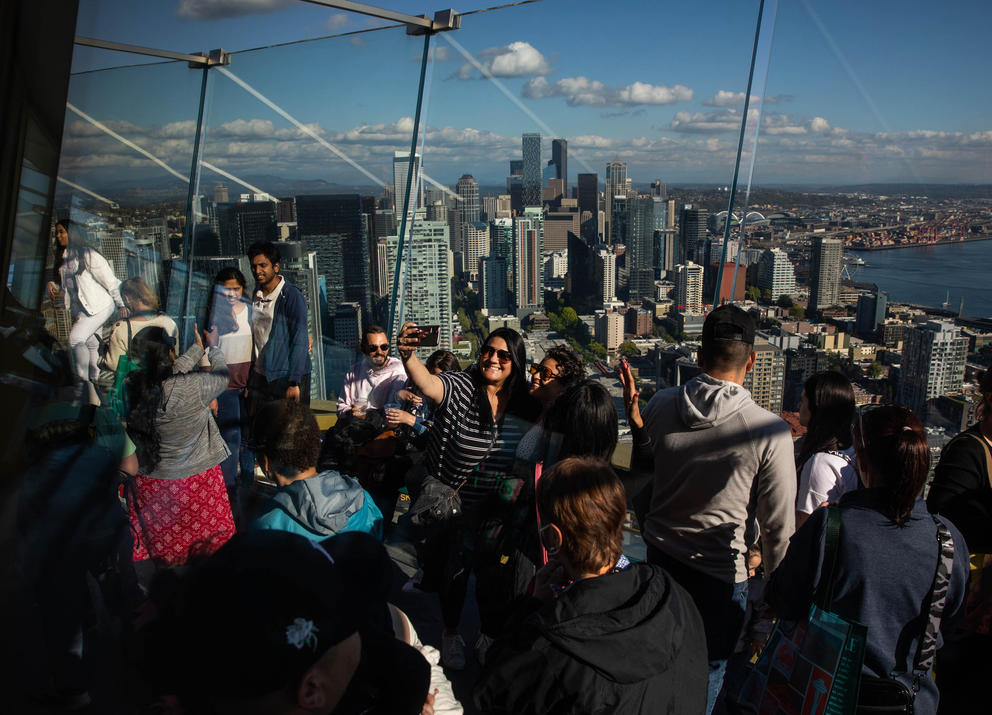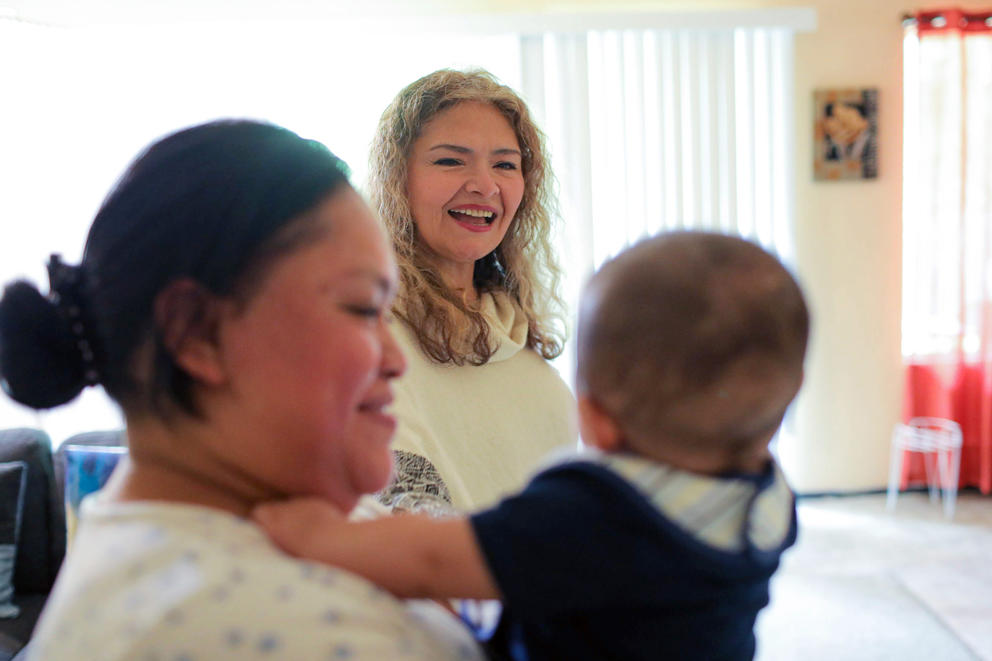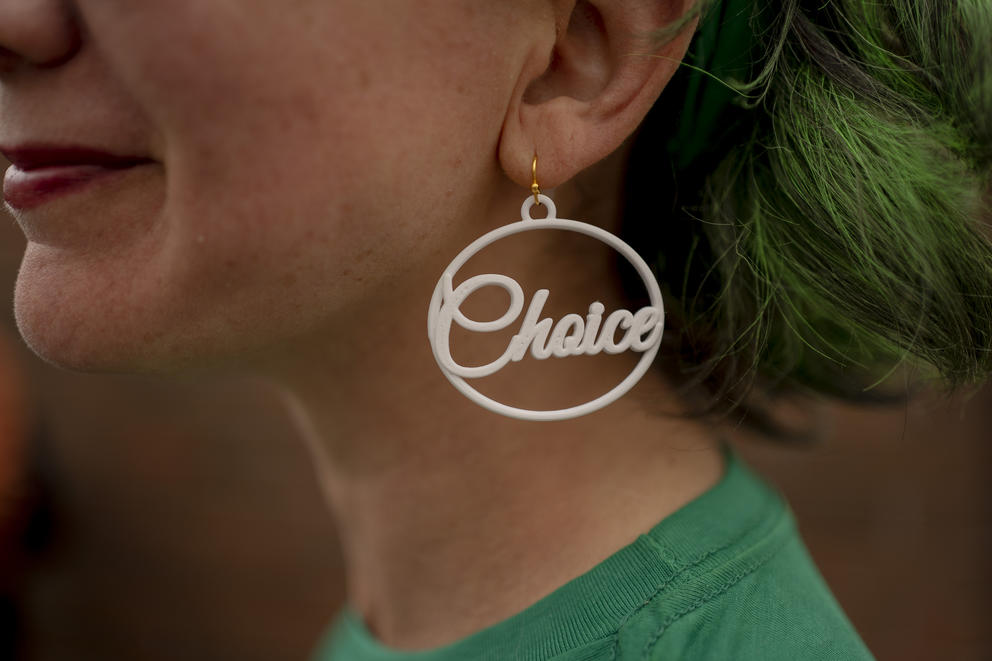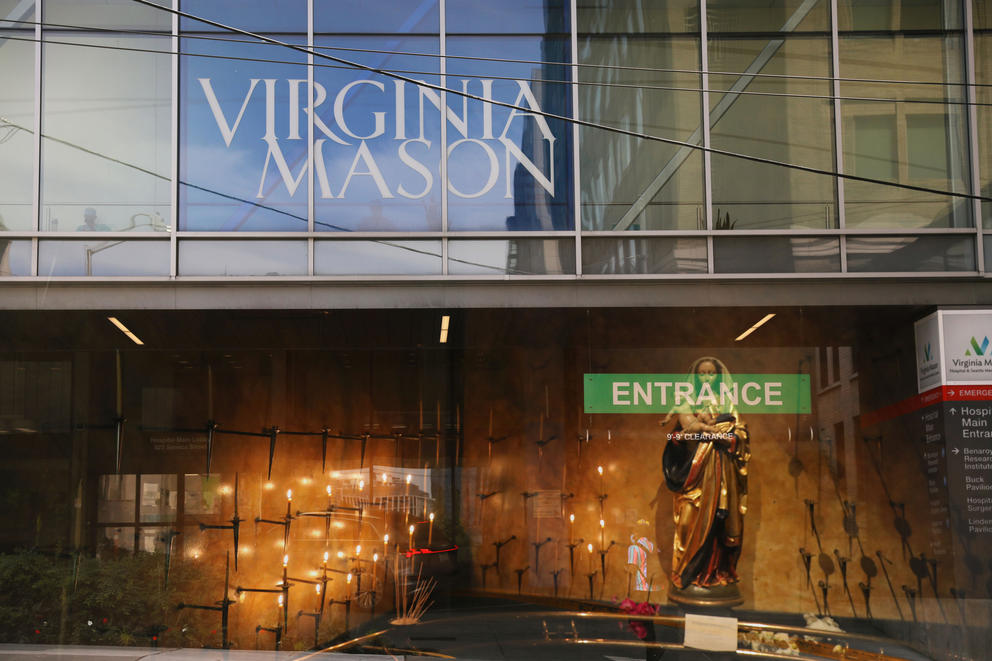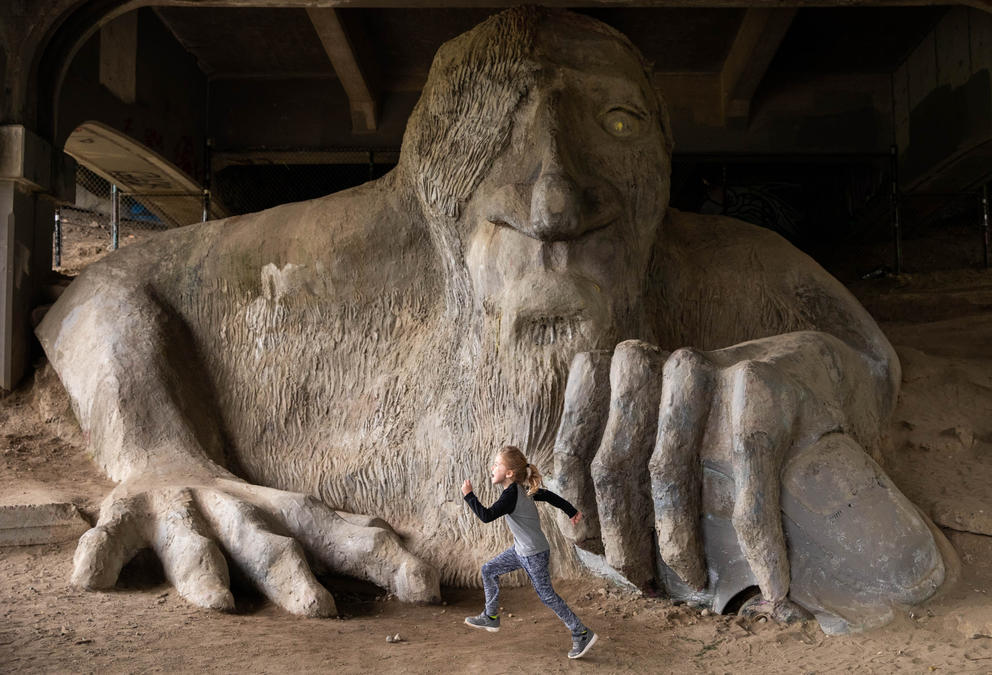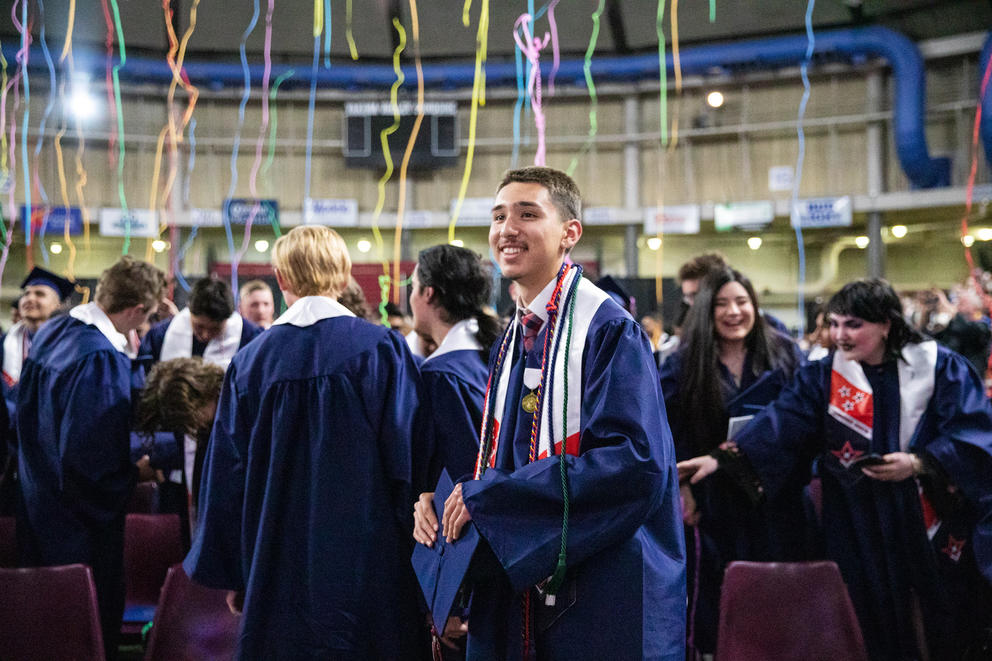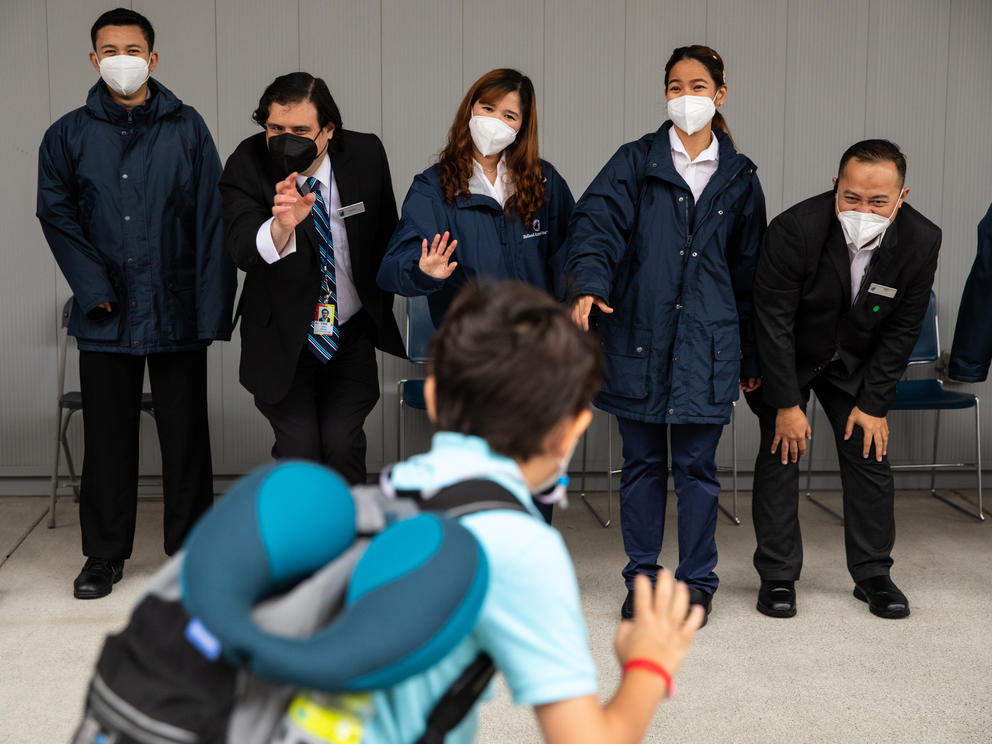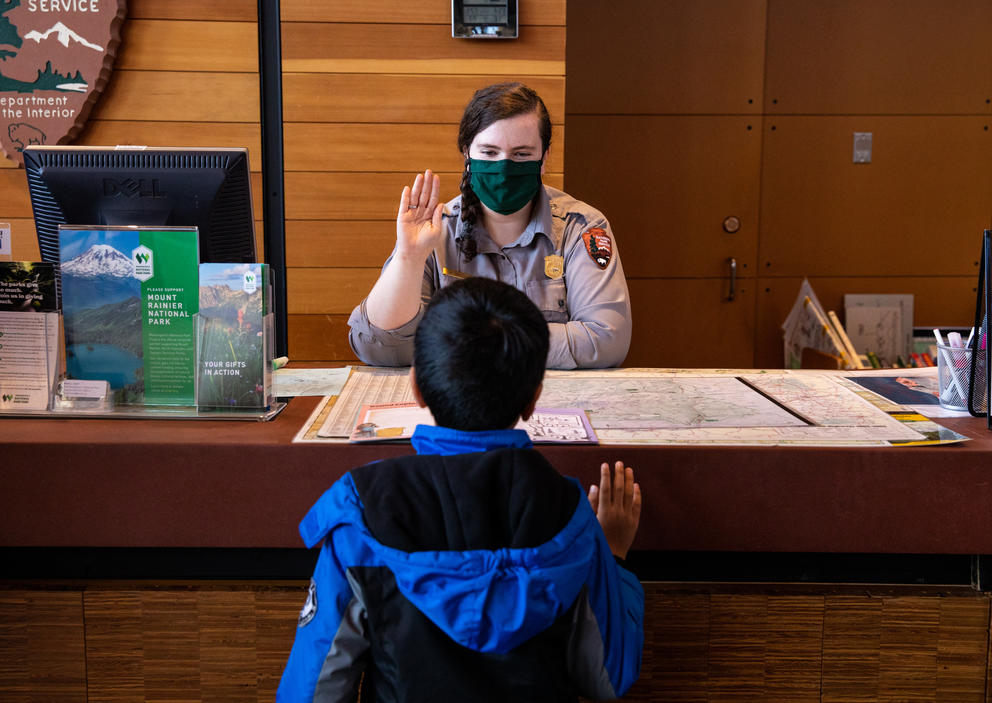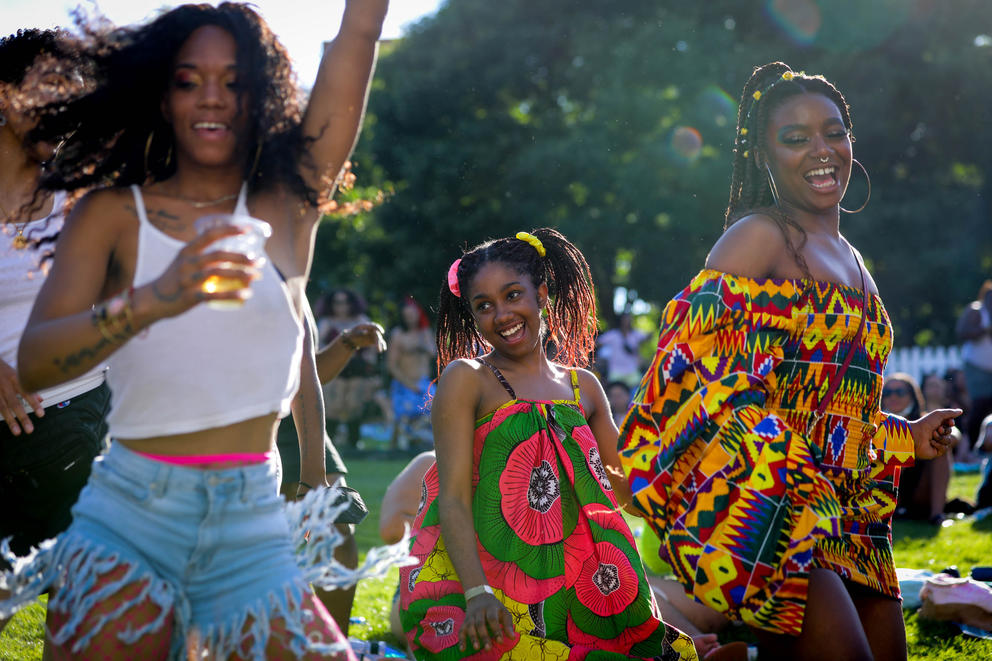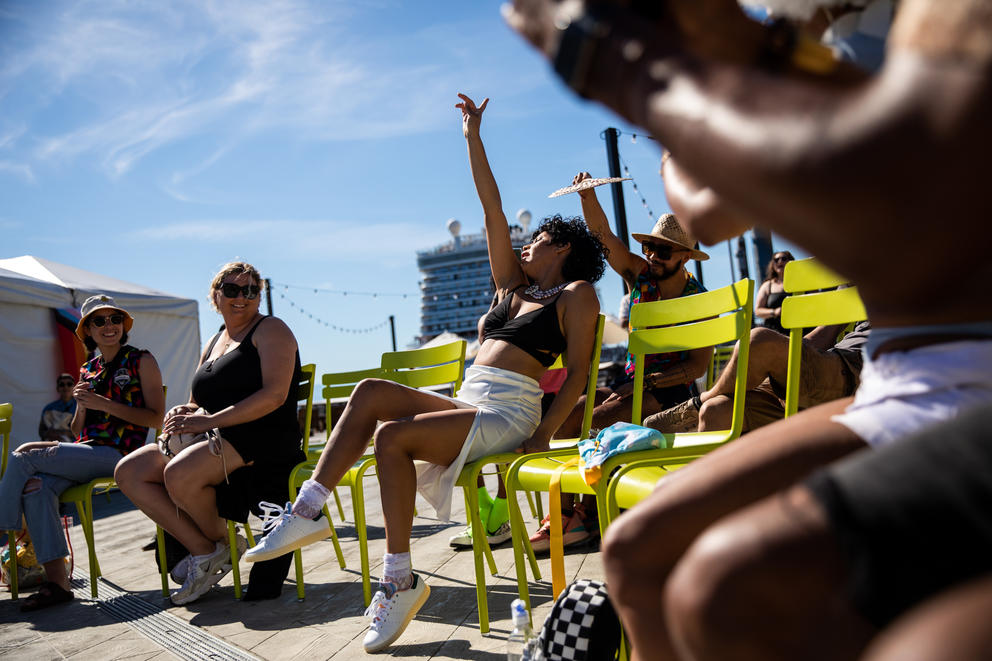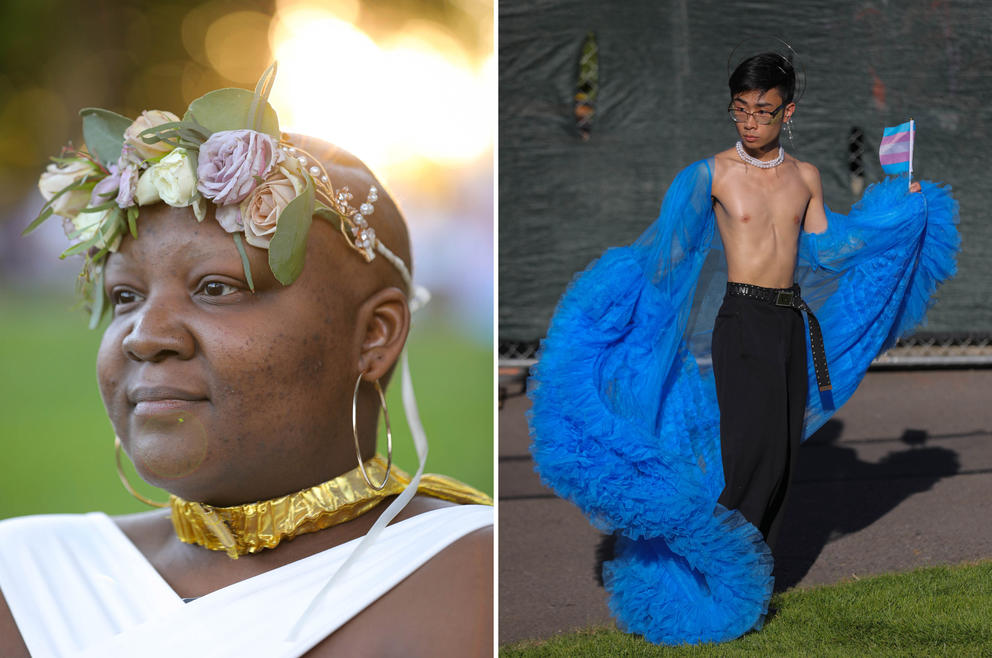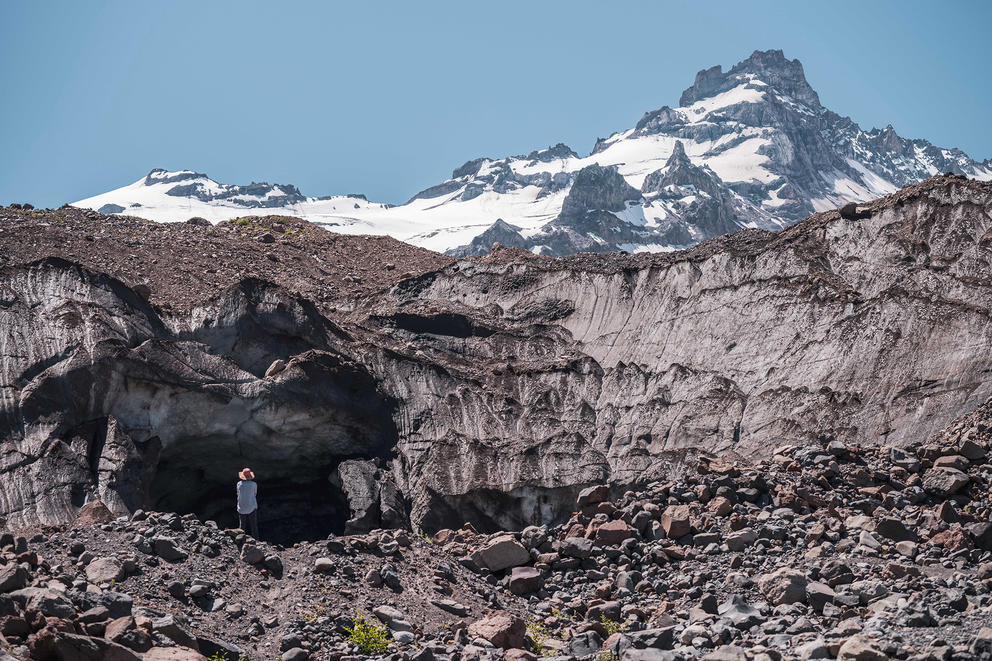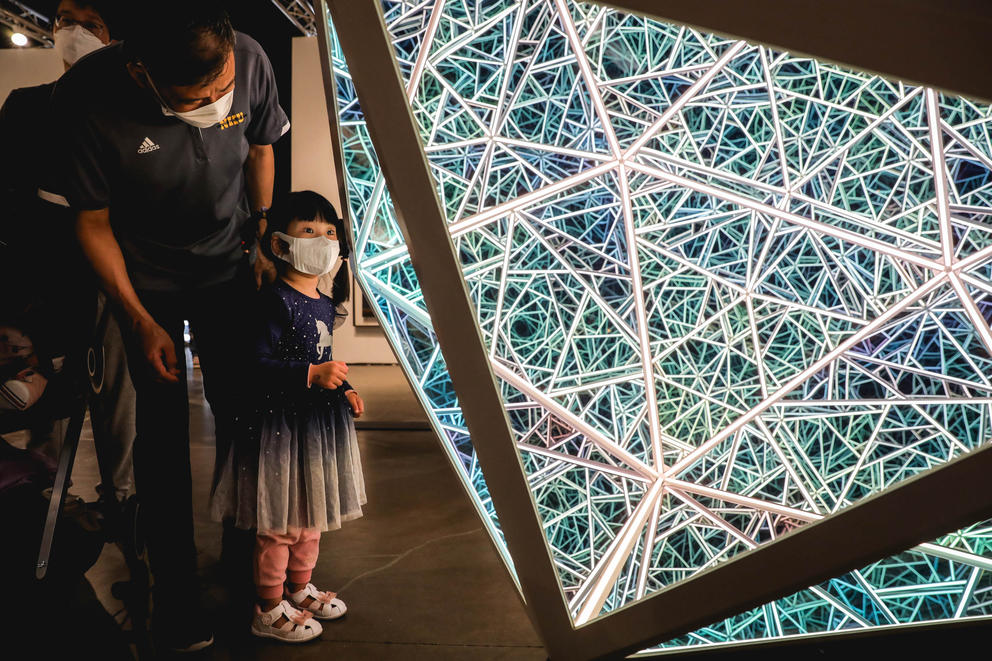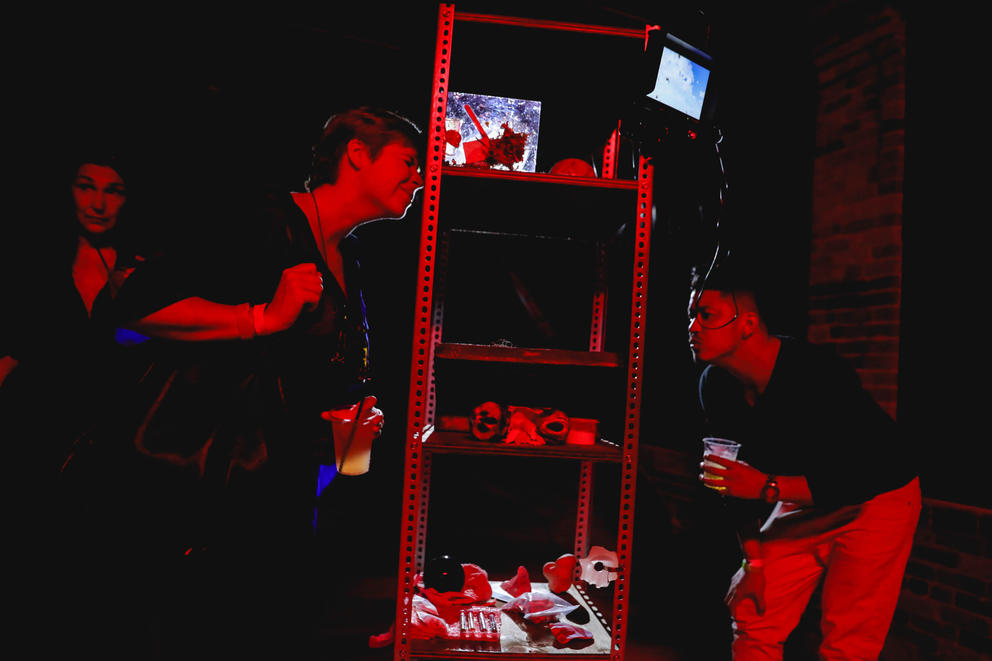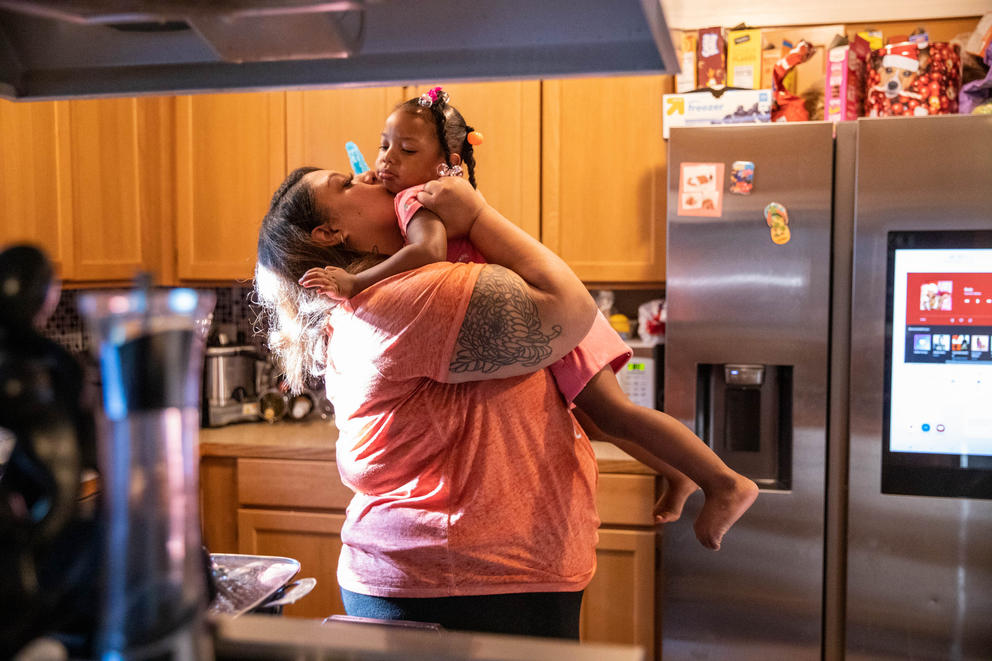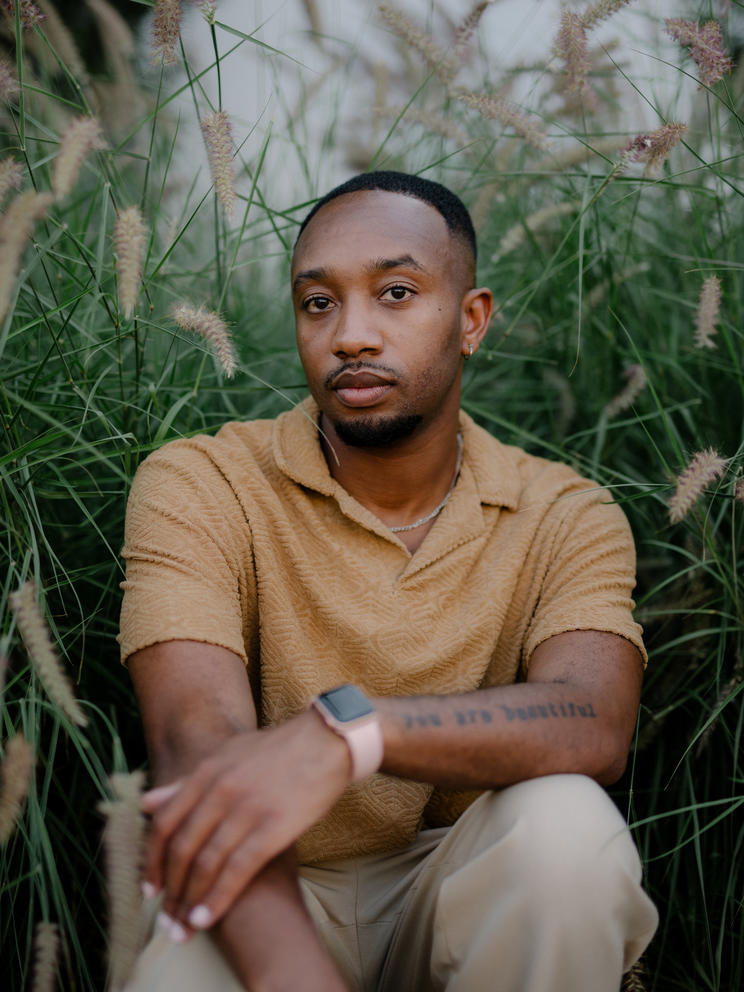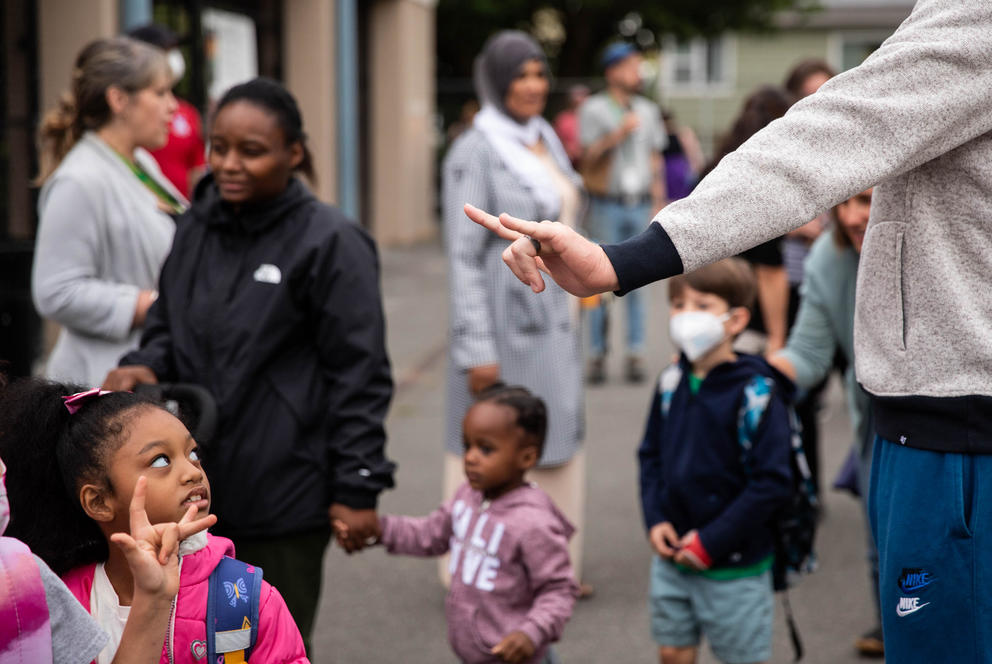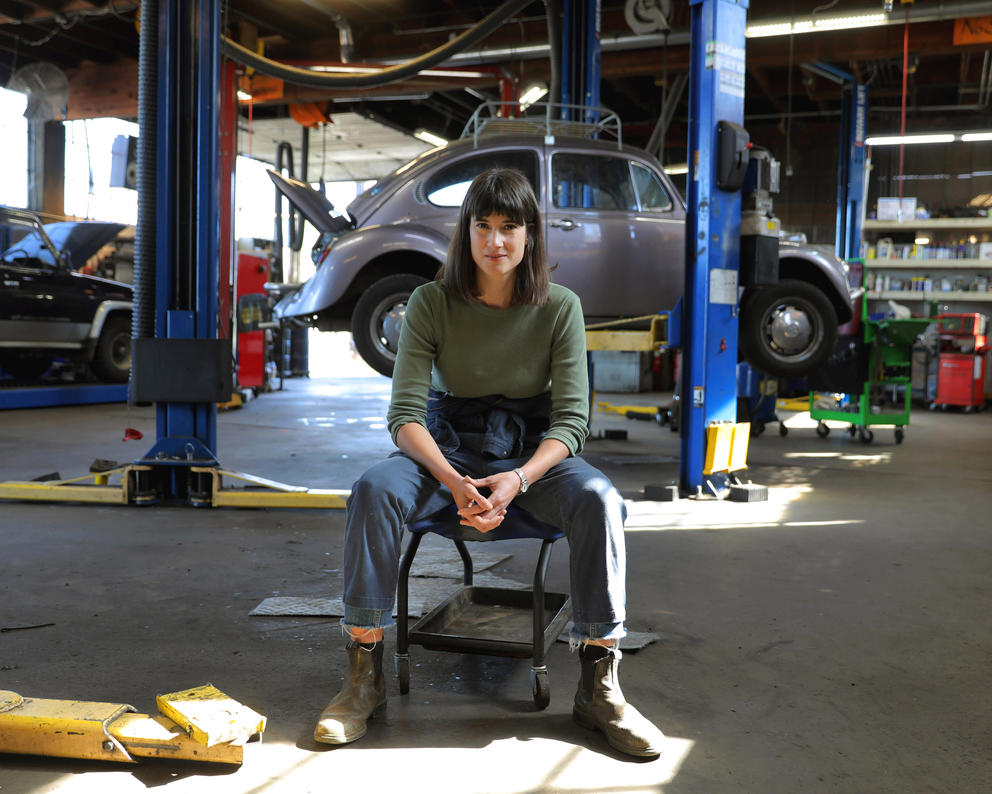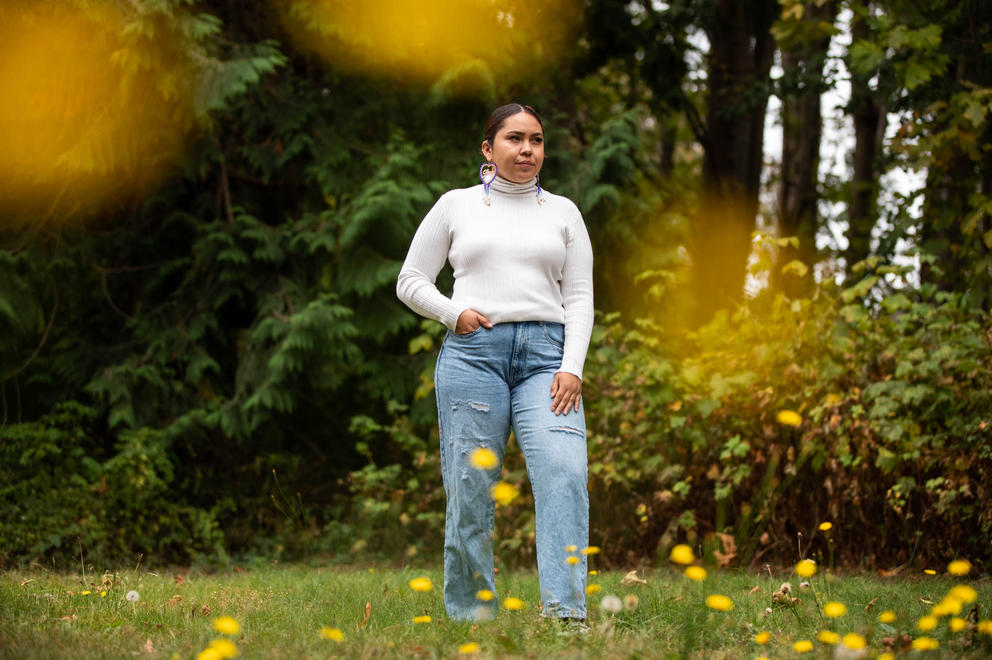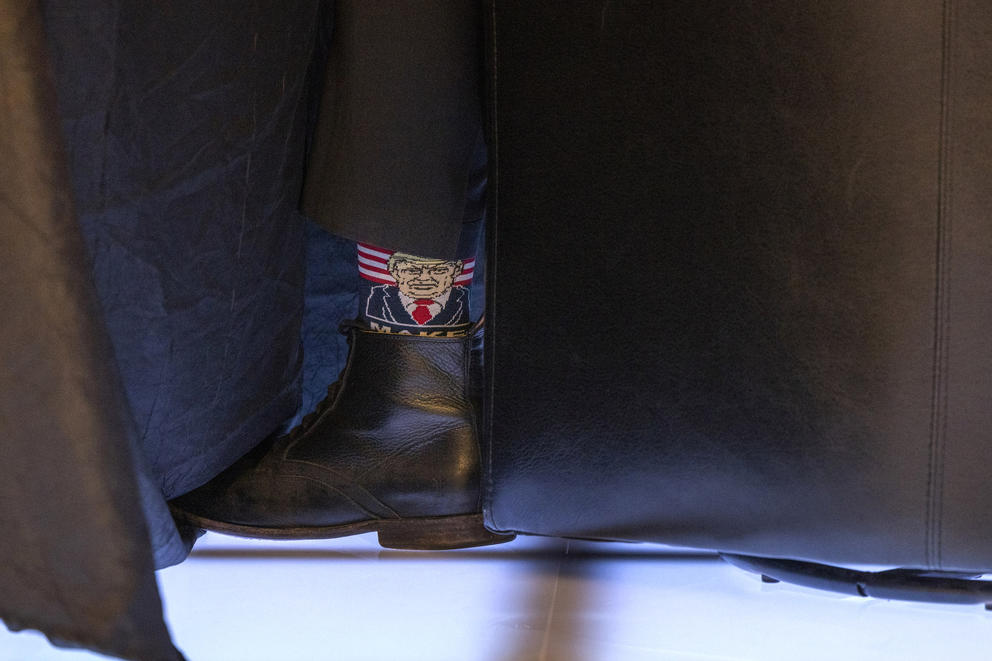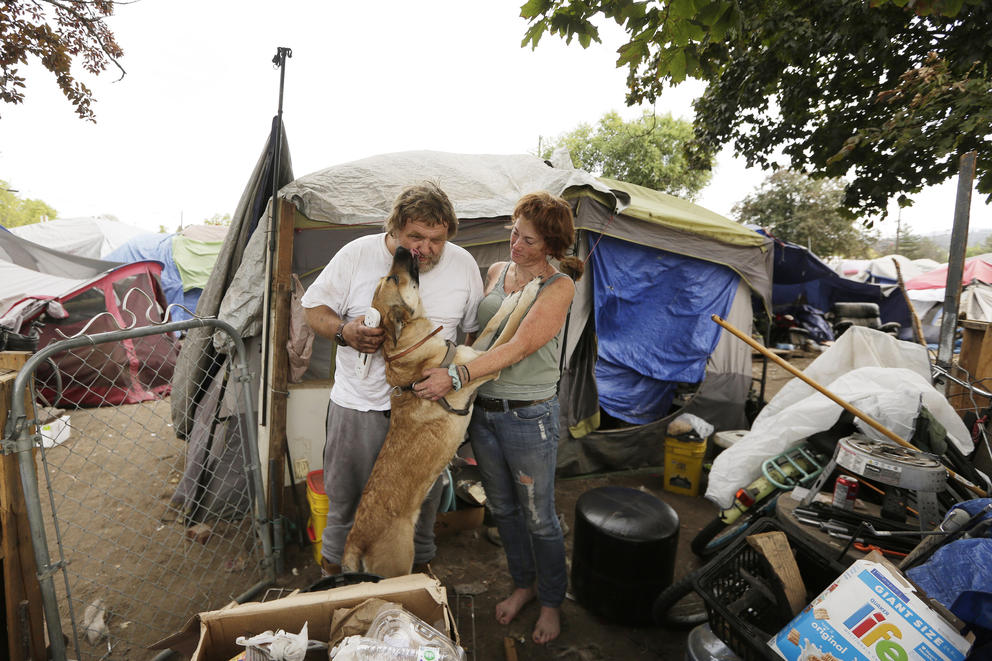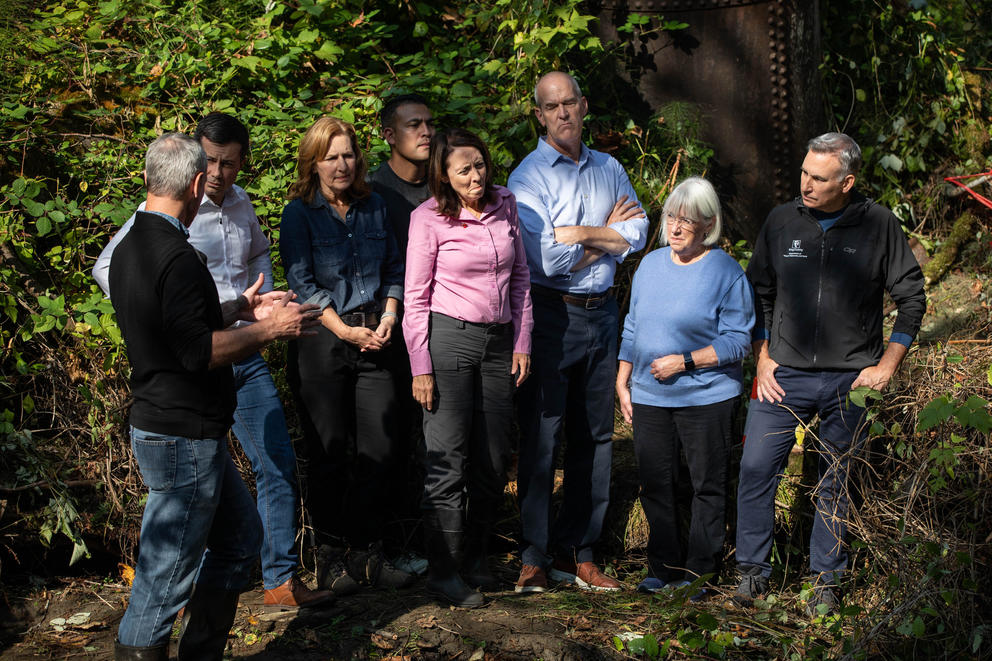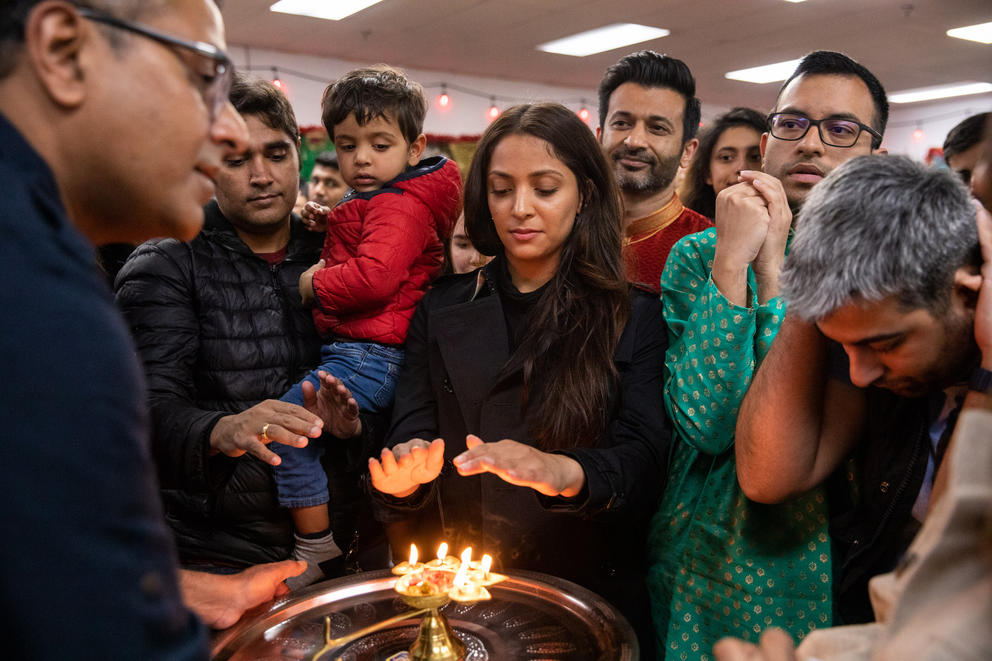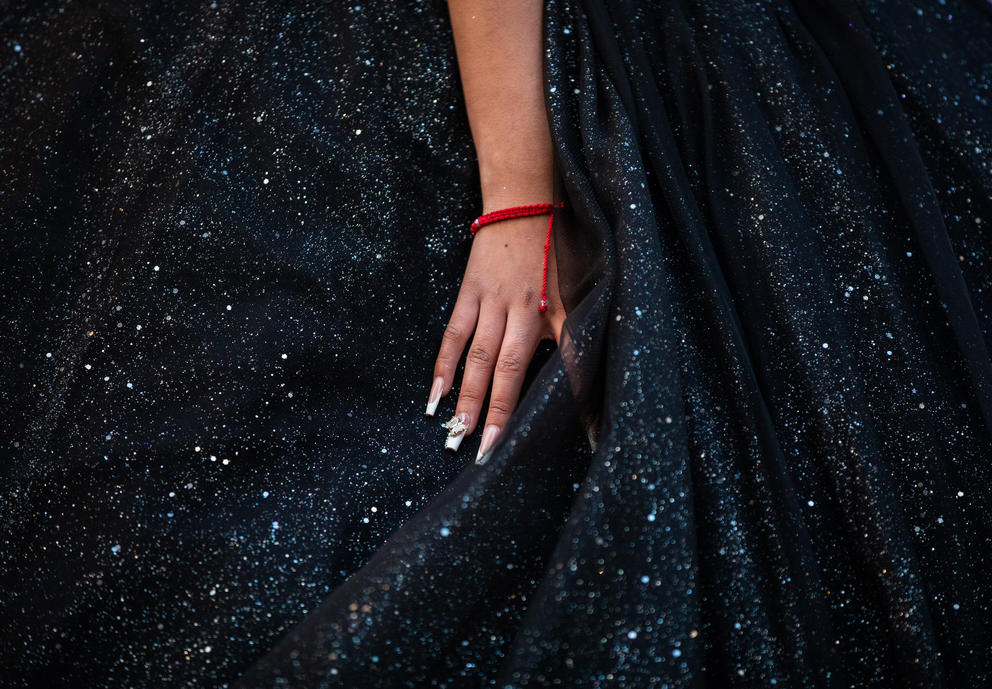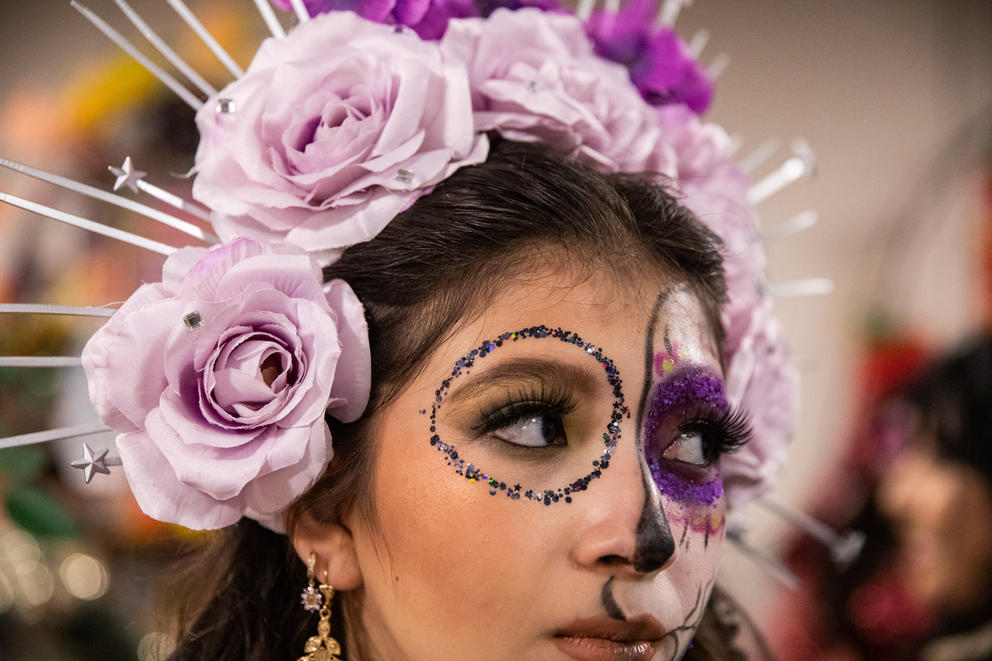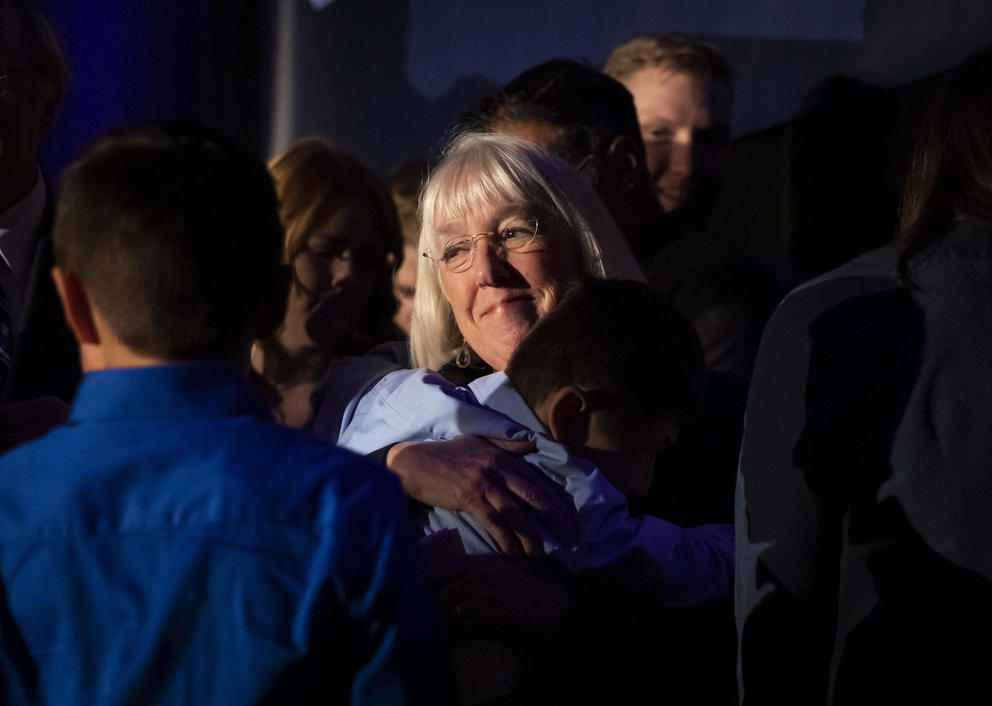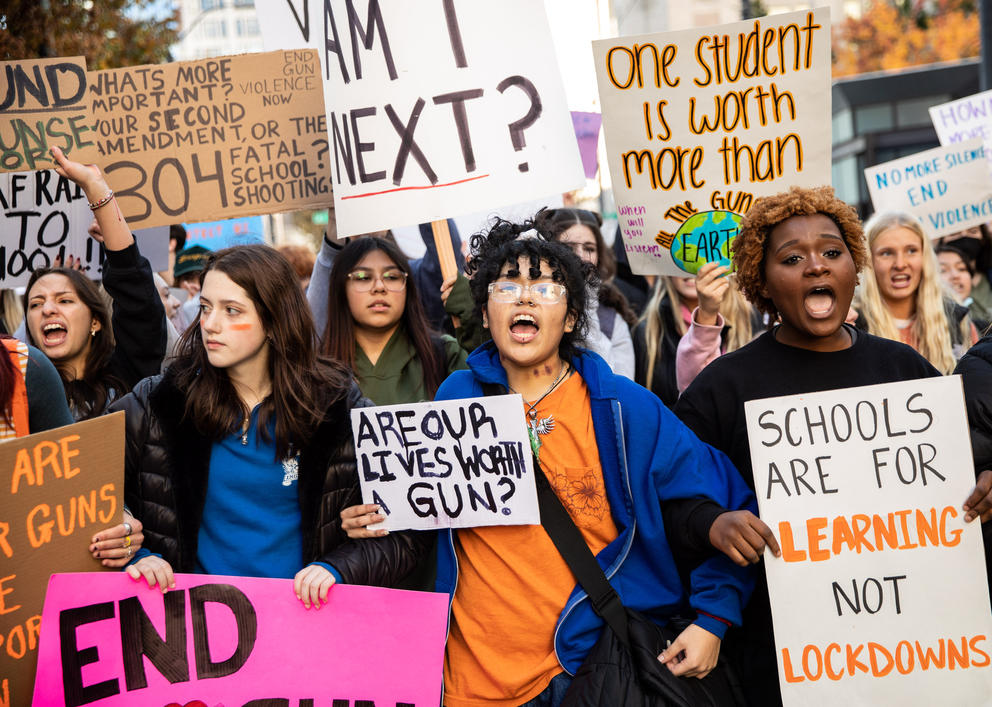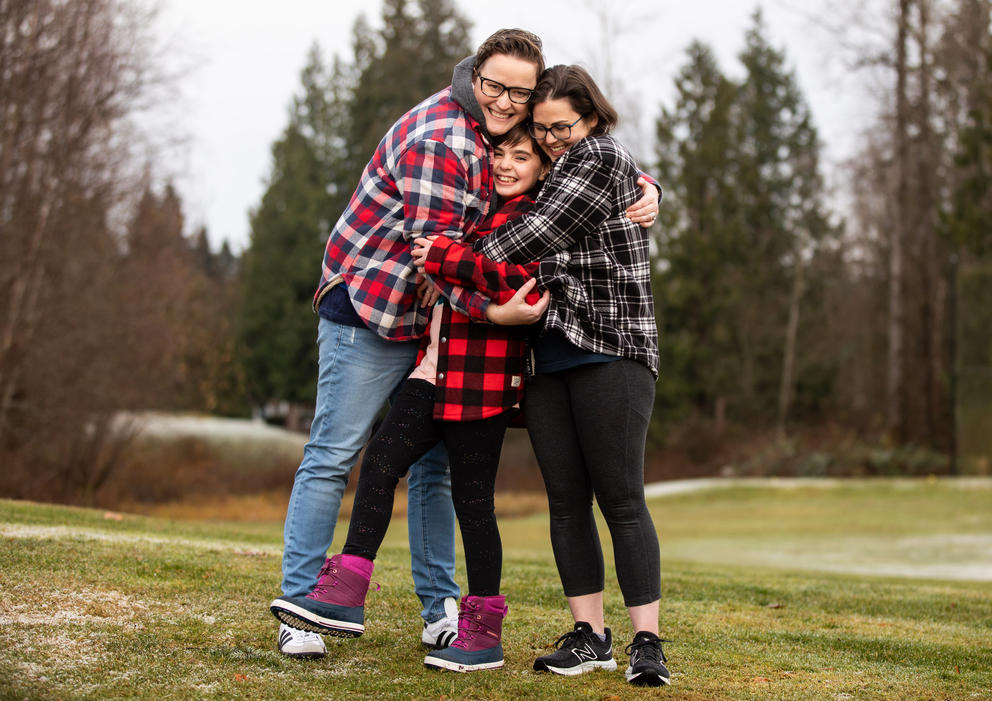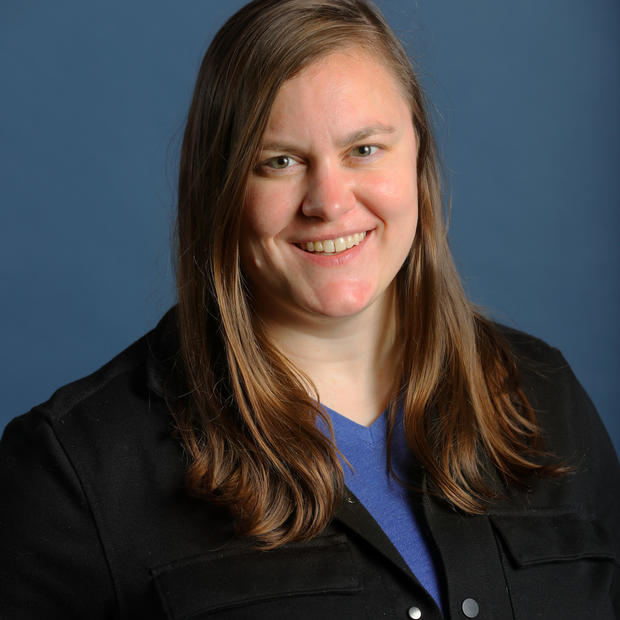This was also a year of growth and change for the Crosscut photo department, as we added Amanda Snyder to our full-time staff in April and I took on my first official year as Associate Photo Editor.
The two of us and our wonderful contributing photographers were out alongside our fellow Washingtonians as we all worked through those growing pains, capturing the celebrations and sorrows of another year.
We learned how to vaccinate a tiger. We explored the world of Washington’s new state sport. We celebrated Black artists and their influence on Seattle’s cultural landscape. We photographed you as you mourned and marched over the loss of abortion rights. We introduced you to newly elected leaders across the state. And we captured your joy as you came together to observe sacred holidays for the first time since the pandemic began.
These are the images that made us think, feel and laugh in 2022. Thank you to everyone who let us into their lives this year, and to our readers for once again letting us reflect your communities back to you.
In January we reported on the now-successful push to make pickleball Washington’s new state sport as it gains traction both locally and nationally. Many picked up the Bainbridge backyard-invented game during the pandemic and have since become evangelists for it, recruiting friends and strangers alike to the court. Grant Hindsley captured Stan Price, 70, playing in a doubles pickleball tournament at the Wenatchee Racquet and Athletic Club on Jan. 16. (Grant Hindsley for Crosscut)
In January, Melissa Santos reported on Washington’s beleaguered long-term WA Cares program, designed to help people pay for nursing care. Nina Valerio, 77, and her husband and partner of 37 years, Joseph Scott, 86, who suffers from two types of cancer, partial blindness and memory loss, have experienced firsthand the shortcomings of private long-term care insurance, which the state program was intended to address. Valerio acts as Scott’s caretaker, and the couple has been paying into private long-term care insurance for over 20 years, but MetLife has repeatedly delayed or denied their benefit requests as Scott’s health has declined over the past year. Genna Martin captured Valerio and Scott during an emotional moment at their home in Columbia City, January 18. (Genna Martin/Crosscut)
Multimedia visual artist and designer Jite Agbro, photographed here by Grant Hindsley on Feb. 3, recreated her childhood home in South Lake Union’s MadArt Studio this year as part of her immersive exhibition, P.L.U.A. (Proposed Land Use Action). The installation of architectural textile prints represents the Central District public-housing apartment complex she grew up in, which is set to be demolished. Visually and thematically, the show takes from those tall, graphic, blue-and-white harbingers of change that have mushroomed across Seattle, particularly in the historically Black, now gentrified Central District.
“There’s so many buildings that have disappeared in the city over the last 10 years,” says Agbro, who now lives in Wallingford. “I thought that this would be a way to pour that grief into something that was constructive.” (Grant Hindsley for Crosscut)
As Melissa Santos reported in March, when Washington’s Legislature approved $340 million in aid for undocumented immigrants in April 2021, advocacy groups hailed the state as a national leader in providing pandemic relief to undocumented workers. More than 10 months later, none of that $340 million has reached the wallets of the intended recipients. One of those workers is Francis, who wished to remain anonymous, seen here at his home near Tacoma on Feb. 23. An undocumented immigrant from East Africa who has lived in the U.S. almost two decades, Francis didn’t receive any stimulus checks during the pandemic due to his immigration status. (Grant Hindsley for Crosscut)
As lawmakers worked to pass Senate Bill 5838 to provide extra money to low-income families, reporter Maleeha Syed spoke with someone who would benefit from that bill: single mother of three Sequoia Dolan, seen here playing with her daughters Zayah, 2, and Jaeleah, 10, Feb. 25. Dolan is completing a degree in early childhood development and eventually plans to open a daycare. Because she is a TANF recipient, her classes and books are free. The bill, signed into law in March, will help parents like Dolan get additional money to pay for child-related needs like diapers. (Genna Martin/Crosscut)
As people began to venture back out into the world this past spring after months of COVID-19 lockdowns and closures, performance venues deliberated over how long to keep mask requirements in place. Many large Seattle theaters decided to continue requiring masks, even after they were no longer mandated to do so by the state starting March 12. A masked-up crowd watches Mitski perform Wednesday, March 9 at the Moore Theater. (Genna Martin/Crosscut)
This year, Washington saw at least a 4% drop in public school enrollment compared to the previous school year — while home-school and private school enrollment in Washington soared by thousands. The Madrona Village School, an independent one-room schoolhouse in Seattle, is one of the private alternatives founded by a group of families during the pandemic. Madrona student Nova Villegas reads during independent work time on March 10. (Jovelle Tamayo for Crosscut)
Prosecutors are legally and ethically required to turn over evidence that could help defendants prove their innocence. When they don’t, however, they rarely face discipline.
Jason Young was charged with stealing bicycles from the Port of Friday Harbor in 2019; the case dragged on two years. At trial, the deputy who originally said the video showed Young stealing bicycles later admitted his sworn statement was inaccurate.
Young said that during the trial, his business working on cars dried up because no one on San Juan Island wanted to hire an accused thief. He and friend Rashelle, photographed here in Anacortes on March 25, are now homeless. (Amanda Snyder/Crosscut)
Ukrainian artist Darya Husak showed her installation, “The Spring Is So Imminent,” which included a symbolic home prayer corner, in the small window gallery Das Schaufenster in Ballard in April. The installation, part of Anastasia Babenko's curated project, "The Middle Seat," has taken on extra meaning during the invasion of Ukraine. Husak’s title comes from a poem by Ukrainian writer Serhiy Zhadan. (Amanda Snyder/Crosscut)
In June, Crosscut debuted Black Arts Legacies, a multimedia collaboration highlighting the longstanding, vital and ongoing role of Black artists and Black arts organizations in the Seattle-area cultural landscape. Photographer Meron Menghistab spent weeks making layered, dynamic portraits of each of the 19 living artists featured in the project, including (clockwise from top left) Jade Solomon Curtis, Al Doggett, Sharon Nyree Williams and Donald Byrd. (Meron Menghistab for Crosscut)
Many small rural Washington restaurants were left behind when the Small Business Administration doled out $918 million in relief funds because the vast majority went to urban eateries. Ken Hwang, co-owner of Fujiyama in Richmond, said their restaurants would’ve survived without the Restaurant Revitalization Fund grants since the owners had money stashed away in addition to the PPP loans they received, but it would’ve been close. Two of Fujiyama’s four locations received Restaurant Revitalization Fund grants, one in Liberty Lake near Spokane and one in Richland, for a combined $800,000. (Amanda Snyder/Crosscut)
It’s not every day you get up close and personal with a tiger. In April, Hannah Weinberger reported on Woodland Park Zoo’s voluntary animal vaccination process.
Just like people, tigers and other mammals are vulnerable to coronaviruses like the one responsible for the pandemic, which means dozens of the zoo's animals are at risk. Azul, a female Malaysian tiger who moved to Woodland Park in Sept. 2020, was one of the first animals in the United States to get COVID. Because the vaccines are administered by hand while the animals are awake (a new experience for many, as they generally undergo medical procedures while under anesthesia or while restrained), the zoo's vet staff saw this as an opportunity to improve animal welfare: Woodland Park employees believe that giving animals choice and agency in their care improves their health and quality of life
During a round of voluntary vaccination training, animal keeper Matt Cline holds Azul’s tail before poking it with a kebab stick to simulate an injection or blood draw, April 26. The tigers train for this procedure daily so that when a real vaccination or blood draw occurs, they are comfortable and will voluntarily sit for it without needing to be sedated or restrained. (Genna Martin/Crosscut)
Many of us spent 2022 figuring out new ways to balance work and family. Everett resident Ryan Webber and his family used child tax credit money to pay for child care, but with a limited budget and few nearby options, Webber’s child care doesn't last the entire workday, leaving him to juggle entertaining his son with his duties in a bank’s loan department. (Lizz Giordano for Crosscut)
Gemina Garland-Lewis explored the world of the colorful pinto abalone and scientists’ fight to help it survive in a May photo essay. Here a year-old pinto abalone explores the shell of a 2-year-old as they get ready to be released into the Salish Sea. Although a Washington ban on harvesting pinto abalone went into place in 1994, the population continued to plummet. Conservation efforts to preserve the near-extinct species are now underway. (Gemina Garland-Lewis for Crosscut)
Tourists made a triumphant return to Seattle this summer, crowding local hot spots like Pike Place and the Space Needle. According to figures from Tourism Economics, visitor spending in the state was $13 billion in 2020, a 41 percent drop from 2019. Spending increased in 2021 to $17.7 billion, but remained below pre-pandemic levels. In an effort to continue bringing in tourists and their dollars, Washington Tourism increased its budget to $9 million this year to spend on destination promotion and management, and Seattle doubled the city’s hotel fee to increase its marketing budget. (Amanda Snyder/Crosscut)
Margarita Celis, a community-based outreach doula at Open Arms Perinatal Services, often works with immigrant parents, especially in Spanish-speaking communities, to provide support and care before, during and post-birth. During these postnatal visits, which will continue until the baby is 2 years old, she will talk with parents about the baby’s growth and development progress and check in on the family’s needs. “Many of my clients, they don’t have anybody,” Celis said. “I’m the only one.” Celis, pictured here, visits with clients Victoria Ramirez and her 5-month-old Henry at their home on May 23. (Genna Martin/Crosscut)
Washington residents had a lot to say after the United States Supreme Court’s June 24 decision to overturn Roe v. Wade was first leaked and then made official this year. Thousands of demonstrators took to the streets to defend a right that had been constitutionally protected for over 50 years. Cutouts of the faces of five conservative Supreme Court justices are held above the crowd as thousands gathered outside the Federal Building in downtown Seattle in protest. (Genna Martin/Crosscut)
Demonstrators rally outside of Pike Place Market during a walkout, rally, and march in support of abortion rights that began at Seattle Central College in Seattle, Washington on May 26, 2022. Demonstrators marched through downtown, staging a brief “die in” while lying on the pavement at multiple locations along the way. (David Ryder for Crosscut)
With abortion rights under fire, Megan Burbank reported on the limbo created by recent mergers of religious and secular hospital systems in Washington, including one between Virginia Mason and Catholic CHI Franciscan Health in 2021. These mergers have allowed hospitals to stop providing elective abortions, even though they are a protected right in the state. To illustrate this story, Genna Martin produced multiple exposure images showing the newly formed Virginia Mason Franciscan Health overlaid with details from Seattle’s St. James Cathedral. (Genna Martin/Crosscut)
Ryker Wold runs past the Fremont Troll after climbing around the sculpture on June 7. In 1989, artists were invited to submit ideas for an installation under the bridge, according to the Fremont Chamber of Commerce. Sculptor Steve Badanes won the competition with a public sculpture inspired by the Norwegian folktale “Billy Goats Gruff,” about a troll living under a bridge. For a brief time, an Elvis time capsule was even contained inside the Volkswagen Beetle. (Amanda Snyder/Crosscut)
Over the summer, Amanda Snyder spent time with Yakima’s Jordan Chavez for our Crosscut Reports podcast series on Latino voters as he celebrated graduating from Eisenhower High School and voted for the first time. Chavez’s journey to the ballot box, and the decisions he faces as he forms his political identity, illuminate the complexity of the issues and the difficulty in predicting exactly what would happen on Election Day. (Amanda Snyder/Crosscut)
While limiting passenger numbers to about three-fourths capacity, the Port of Seattle expects 1.26 million visitors this year to arrive via cruise ship. While the industry was down over 2020 and 2021, the local economy saw an estimated loss of $900 million. Many still worry about cruise ships’ impact on the environment as the industry returns. Amanda Snyder photographed the staff of Holland America Line’s Eurodam waving goodbye to passengers disembarking at Terminal 91 on June 18. (Amanda Snyder/Crosscut)
As Seattle begins to move further from prioritizing the corporatized Pride events of years past, the third annual Taking B(l)ack Pride was held at Seattle Center on June 25, continuing their Black-, trans- and queer-centered celebrations. Here Sisters Nazirah and Zenobia Taylor, right, dance to live performances. (Genna Martin/Crosscut)
Stephy Styles jumps into the crowd during her performance at the Indigiqueer Festival on Pier 62 on Saturday, June 25. The festival, one of the year’s several marginalized-identity-focused Pride events, was presented as a part of the Indigiqueer Joy Campaign and curated by Quileute drag queen Hailey Tayathy. “It’s hard to see Indigineity in the queer community if you’re living in the city,” said Tayathy. “It’s hard to find.” (Amanda Snyder/Crosscut)
Mount Rainier’s largest glacier, Emmons Glacier, is melting. Scientists, including University of Washington faculty member Dr. Michelle Koutnik, seen here inspecting the glacier’s terminus under Little Tahoma Peak, are studying Emmons and its impact on Pacific Northwest watersheds as it melts. Nick Danielson hiked up to the glacier with a team of University of Washington faculty and geology students and photographed them as they sampled water quality and took measurements. (Nick Danielson for Crosscut)
The Seattle Art Fair made its post-COVID comeback at Lumen Field this summer, delivering a sprawling collection of art and artists from across the world. A fan favorite was Anthony James’s entrancing “Portal Icosahedron,” a geometric portal that attendees young and old found it difficult to look away from. (Genna Martin/Crosscut)
As Crosscut asked “Do you have to be rich to buy a home in Seattle?”, we met Shavon Jones, a Seattle resident of 18 years who had always wanted to own a home. As prices increased and she became a single mother of five, her dream seemed even further out of reach. But with the help of the Homestead Community Land Trust and Habitat for Humanity, Jones was able to qualify for programs to help her buy a home of her own. (Amanda Snyder/Crosscut)
The first week of school was tumultuous for faculty, parents and students alike this fall. COVID concerns were still alive, and the Seattle Public Schools start date was delayed five days as the Seattle Education Association was on strike, negotiating funding and remedies for staffing shortages. As the strike ended and school officially began on Sept. 14, Amanda Snyder caught this sweet moment between parent and child as students were dropped off at Greenwood Elementary. (Amanda Snyder/Crosscut)
In October, Luna Reyna reported on the Nooksack Tribe’s disenrollment of tribal members. Santana Rabang is a member of the Nooksack 306, a large family group who Nooksack Nation leaders say were erroneously enrolled and are not Nooksack citizens. “No matter what, a plastic tribal ID doesn't define who I am as an Indigenous woman,” said Rabang, shown here outside her Lummi Nation home on Sept. 23. (Amanda Snyder/Crosscut)
Earl Moody, left, and his girlfriend Heidie Titus, both residents at Spokane's Camp Hope where 400 to 600 unhoused people live, are greeted by their 5-year-old dog Shelby Ann on Sept. 28. Moody and Titus, separately, have been unhoused for four years. The City of Spokane threatened multiple times during the year to close the camp, but many who live there have nowhere else to go. (Young Kwak for Crosscut)
Secretary Pete Buttigieg, Rep. Kim Schrier, Muckleshoot Indian Tribe Chair Jaison Elkins, Sen. Maria Cantwell, Rep. Rick Larsen, Sen. Patty Murray and King County Executive Dow Constantine tour a culvert near Maple Valley on Thursday, Oct. 6. The group toured two infrastructure projects and announced new nationwide funding opportunities from the Bipartisan Infrastructure Law, which Buttigieg said would benefit Washington. (Amanda Snyder/Crosscut)
Much to the delight of their long-suffering fans, the Mariners returned to the playoffs for the first time in over two decades. Although their run didn’t make it past the ALDS, that didn’t stop fans from relishing every moment of postseason play. Esteban and Tibisay Benitez, left, and Abell Tecle, center, celebrate the Mariners’ win over the Toronto Blue Jays in the first wild card game at the Oct. 7 watch party at T-Mobile Park. (Genna Martin/Crosscut)
As we watched Russia’s invasion of Ukraine draw on, Maleeha Syed reported on how Ukrainian and Russian families in Washington were dealing with the anxiety and fear. Irina and John VanPatten opened their home to a Ukrainian family, who have been staying with them since May. Irina is Moldovan and has family in Eastern Europe and Russia. Here, 10-month-old Max plays with his mother, Olena Roze, center, and the VanPattens in their home on Oct. 18. (Amanda Snyder/Crosscut)
In October, Amanda Snyder kicked off our new photo series Festivities in Focus, highlighting religious holidays and cultural celebrations in the region. We began with a Diwali celebration at the Bellevue Hindu Temple on Oct. 24, where many came together for the first time since 2019 to observe the Hindu festival of lights. (Amanda Snyder/Crosscut)
For the second installment of Festivities in Focus, Amanda Snyder visited El Centro de la Raza’s Día de Los Muertos celebration, where young women wore elegant handmade La Catrina dresses. La Calavera Catrina, or “elegant skull,” often referred to simply as La Catrina, is a Mexican Day of the Dead tradition in which women paint their faces to resemble a skull and wear elegant dresses and bonnets. The original image of La Catrina comes from an illustration satirizing rich, well-dressed women, but its meaning has evolved to symbolize an acceptance of death and remind people of their morality. (Amanda Snyder/Crosscut)
Young women dressed as La Catrina wait to take photos near the altars during El Centro de la Raza’s Día de los Muertos celebration on Beacon Hill on Saturday, Nov. 5. La Calavera Catrina, or “elegant skull,” often referred to simply as La Catrina, is a Mexican Day of the Dead tradition in which women paint their faces as a skull and wear elegant dresses and bonnets. The original image of La Catrina comes from an illustration satirizing rich, well-dressed women, but its meaning has evolved to symbolize an acceptance of death and remind people of their morality. (Amanda Snyder/Crosscut)

